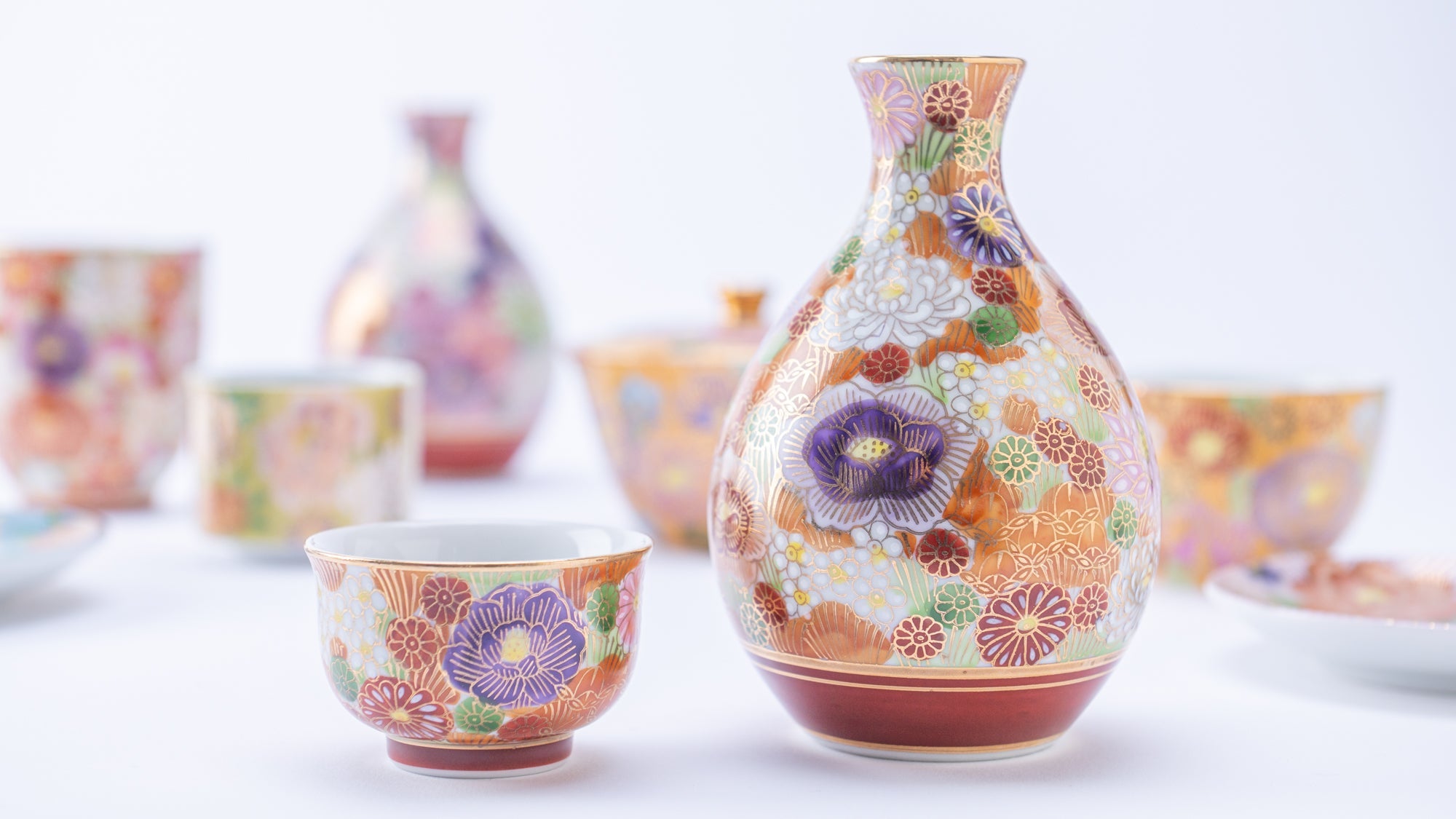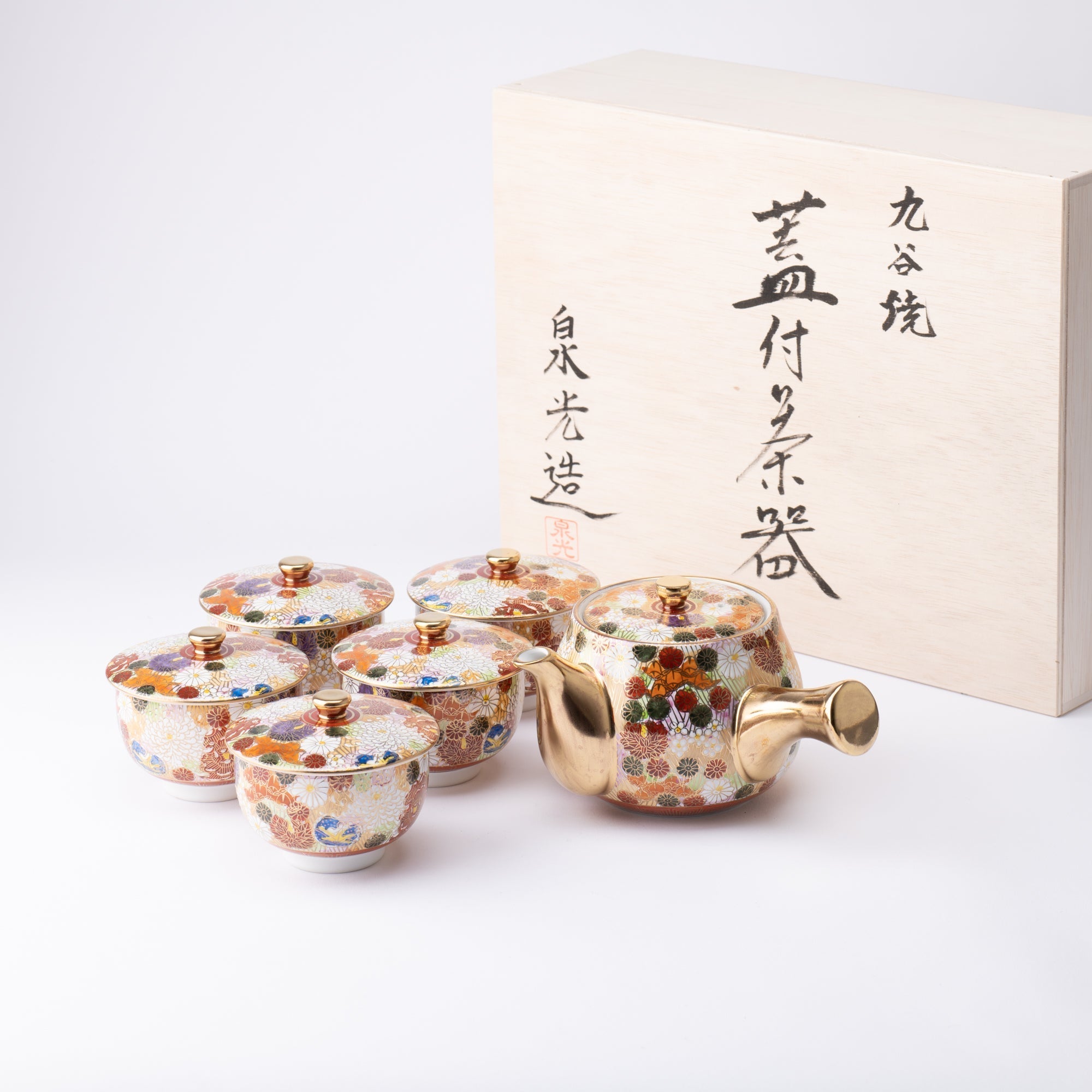
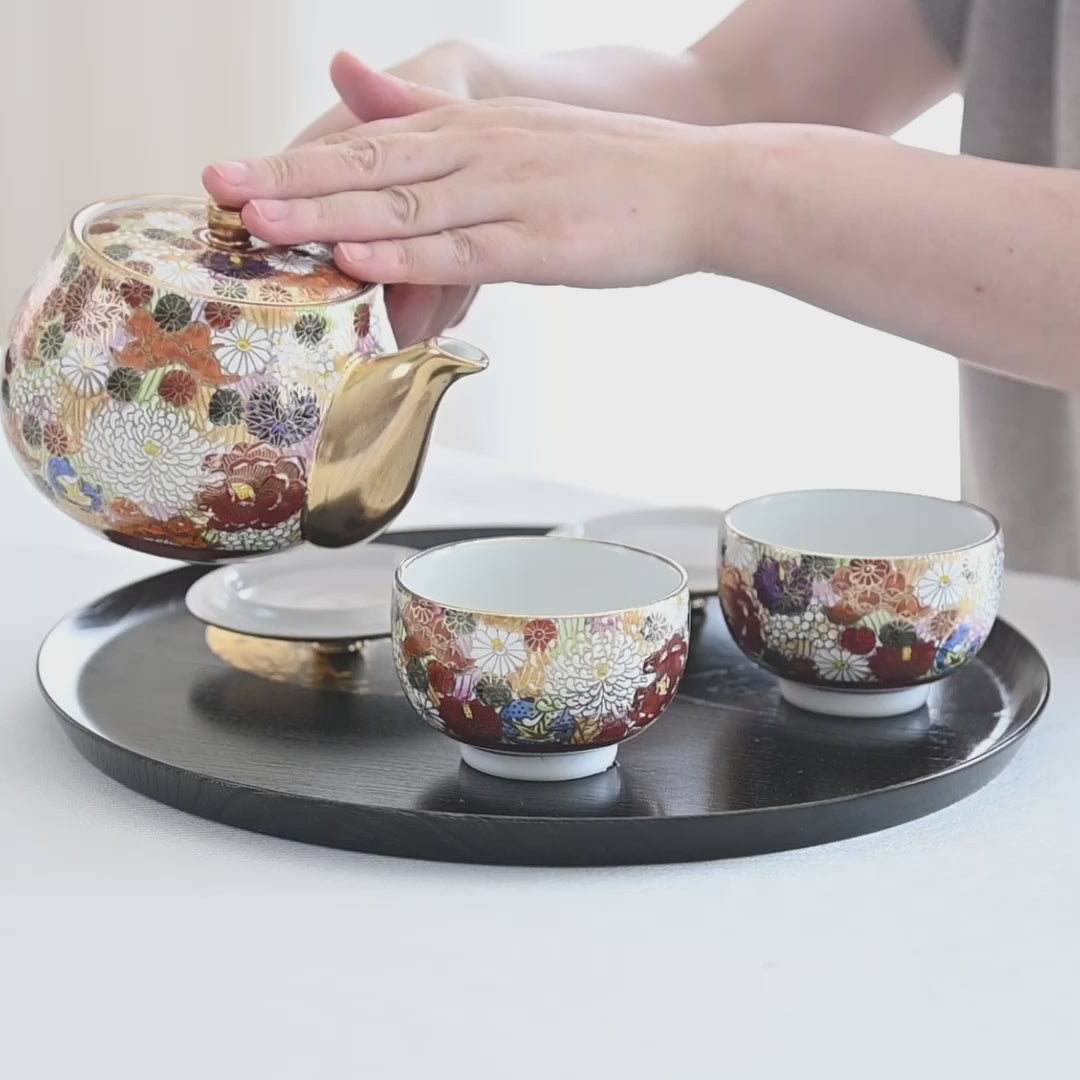
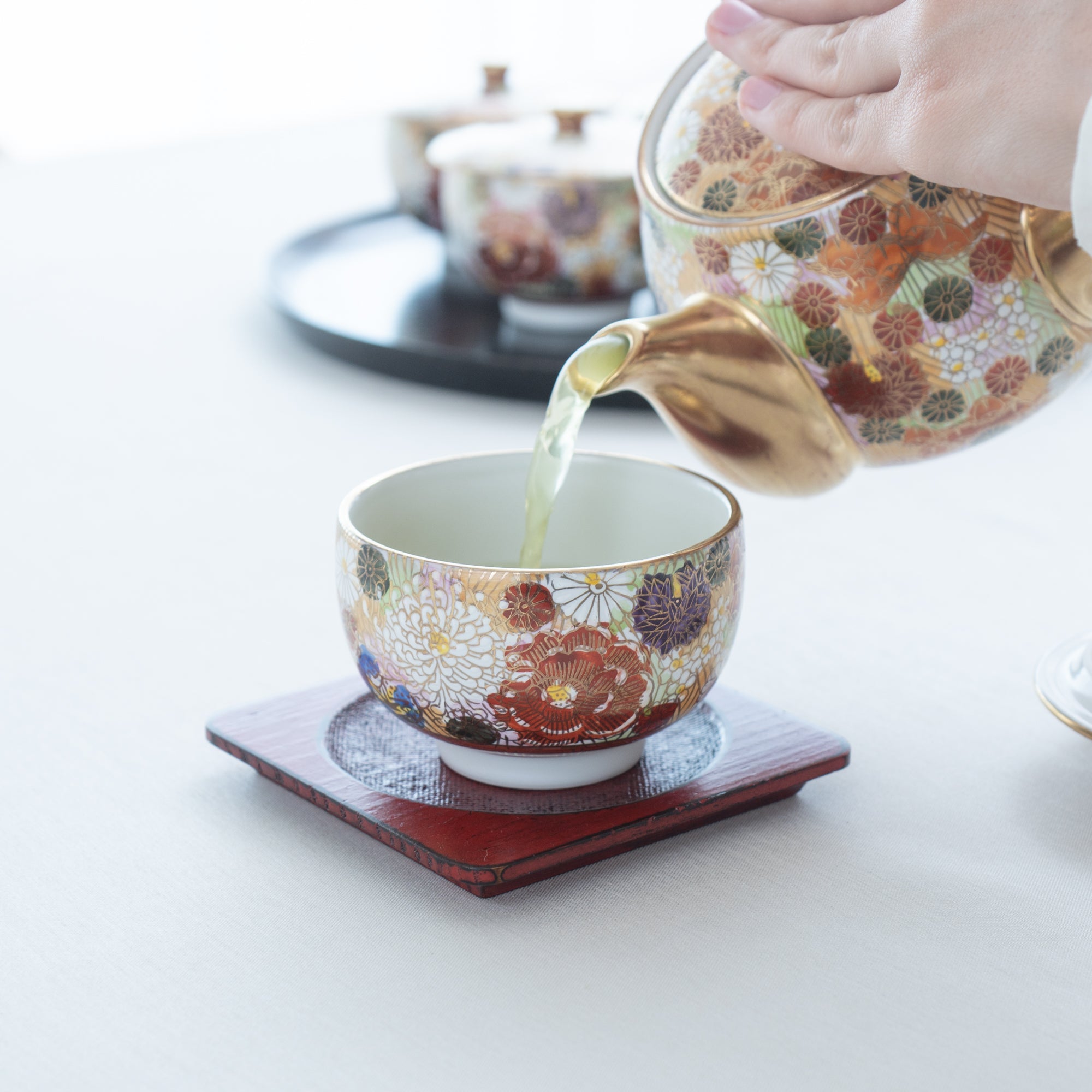
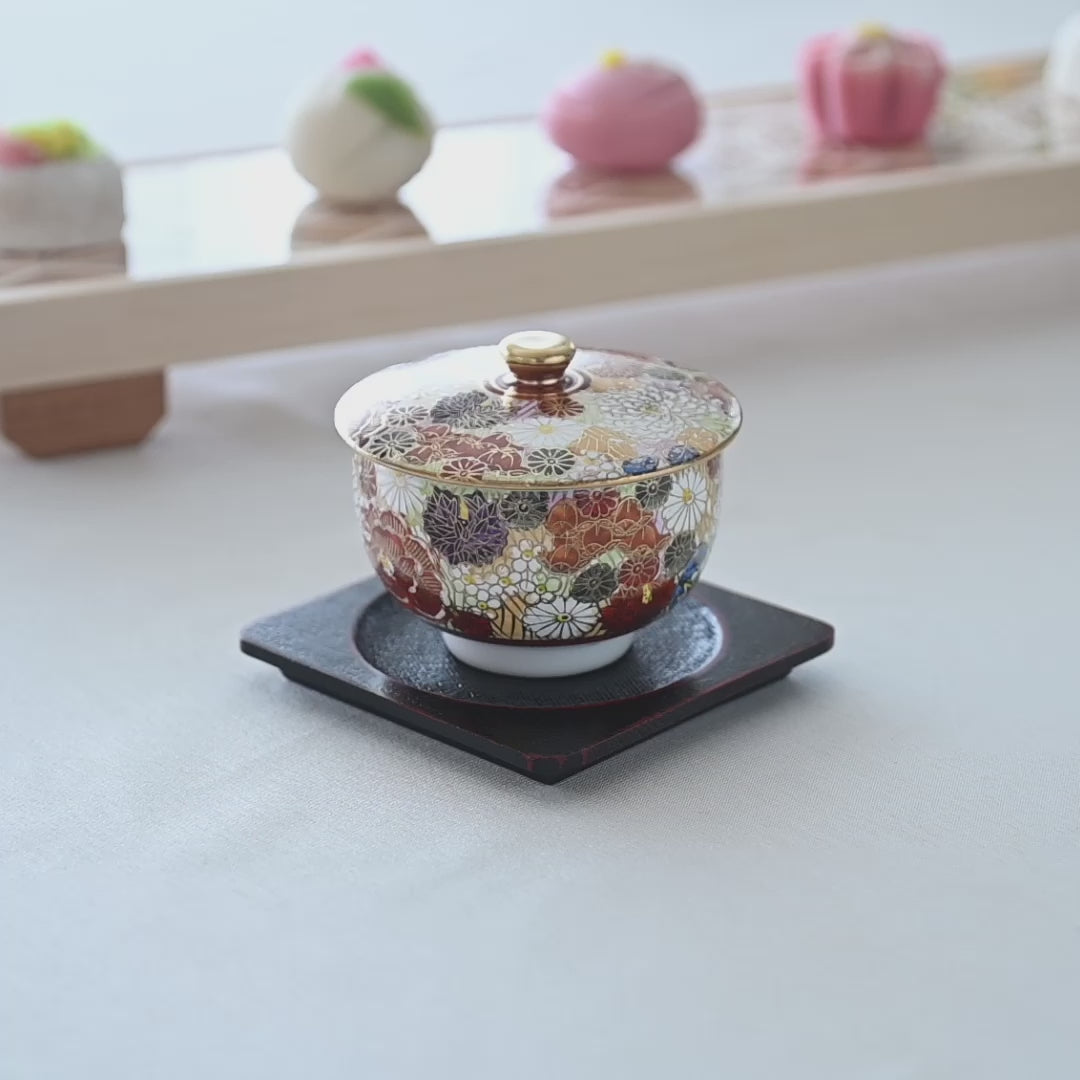
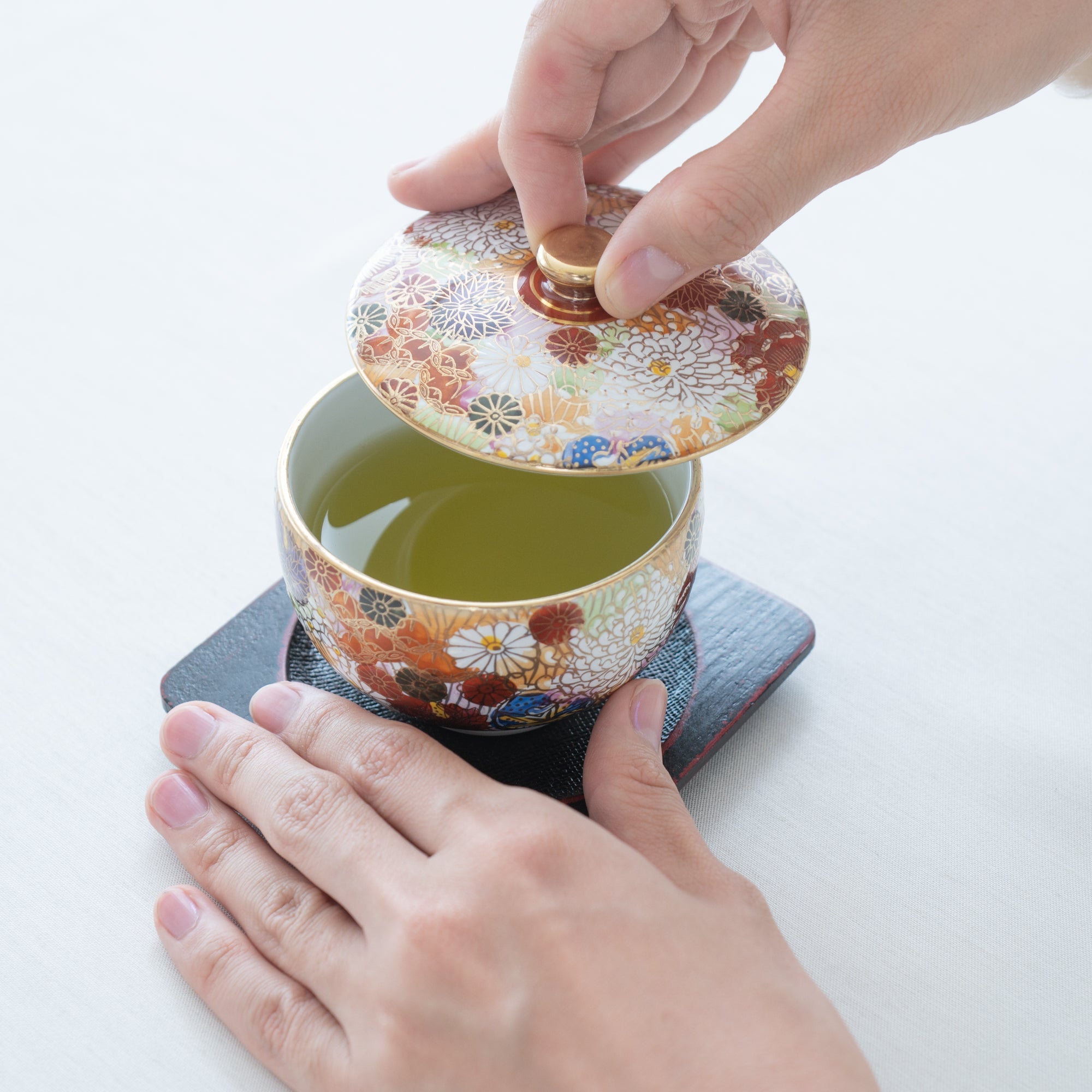
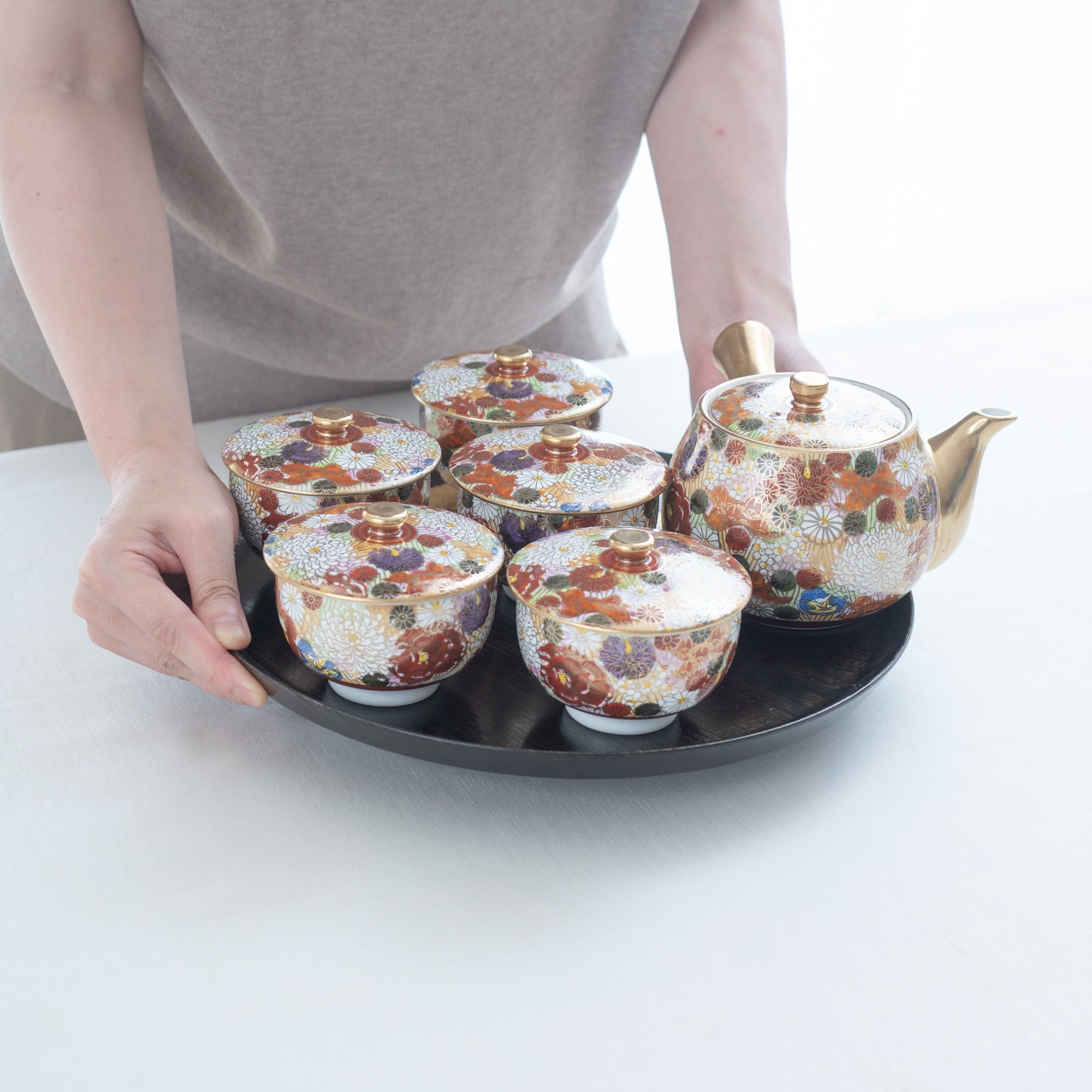
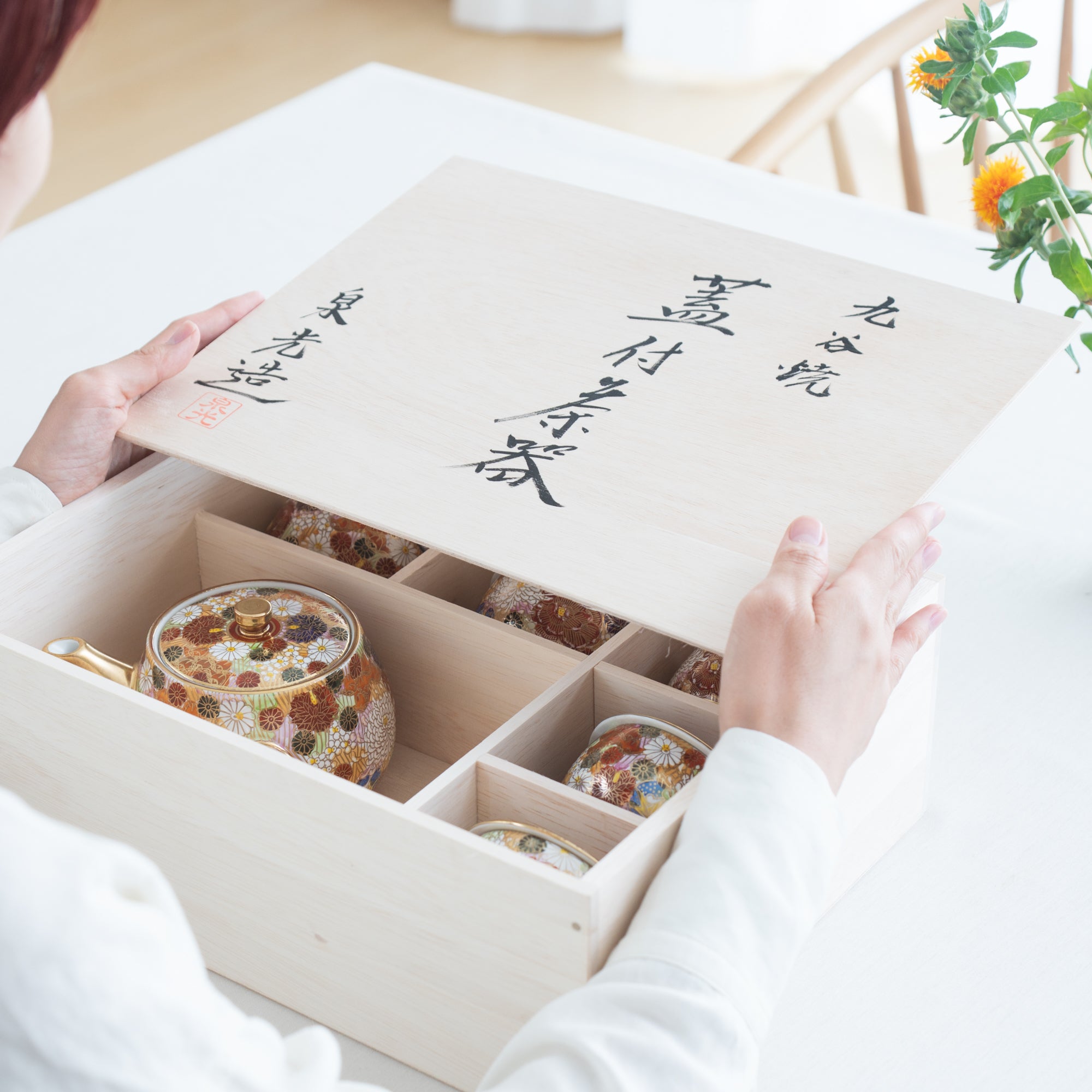
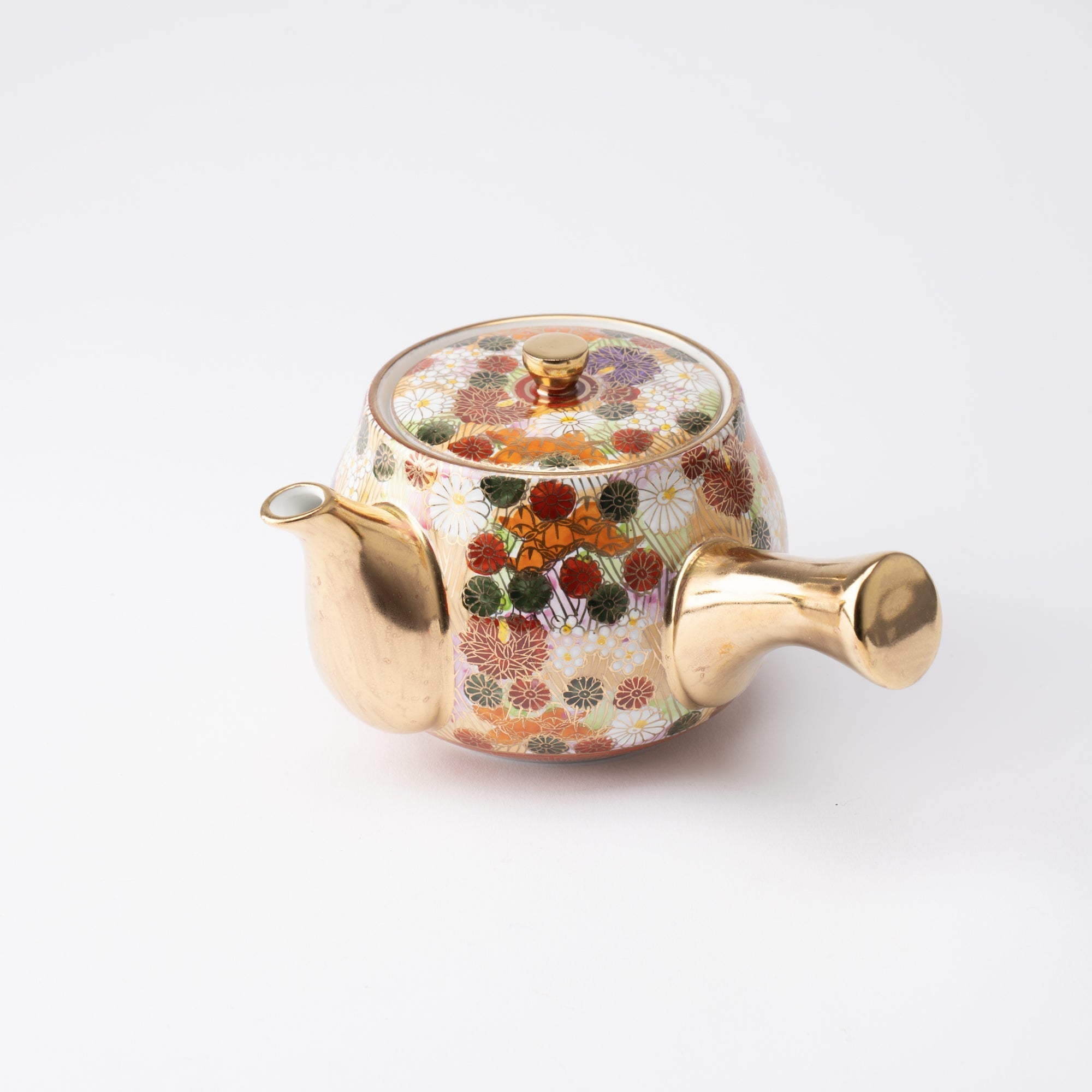
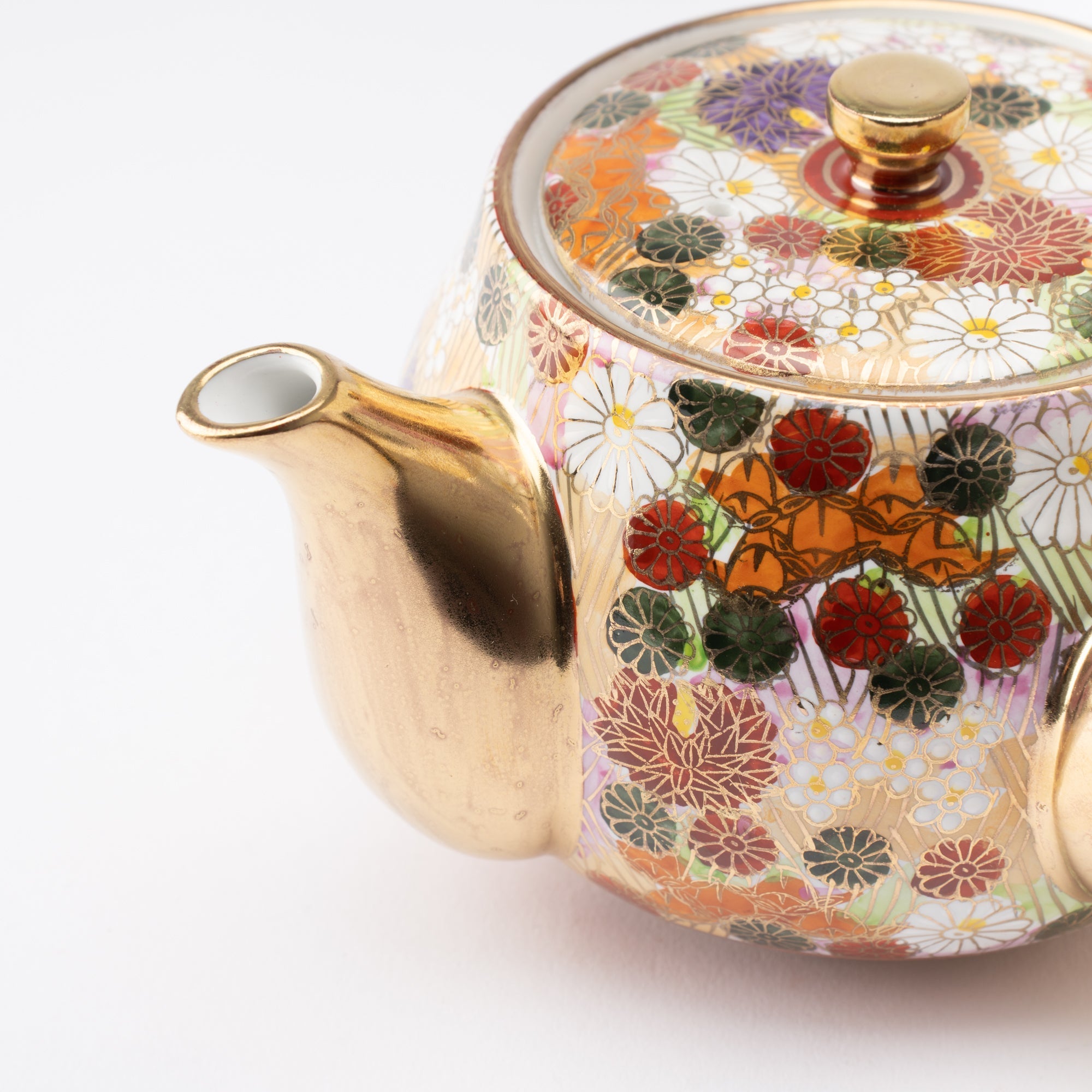
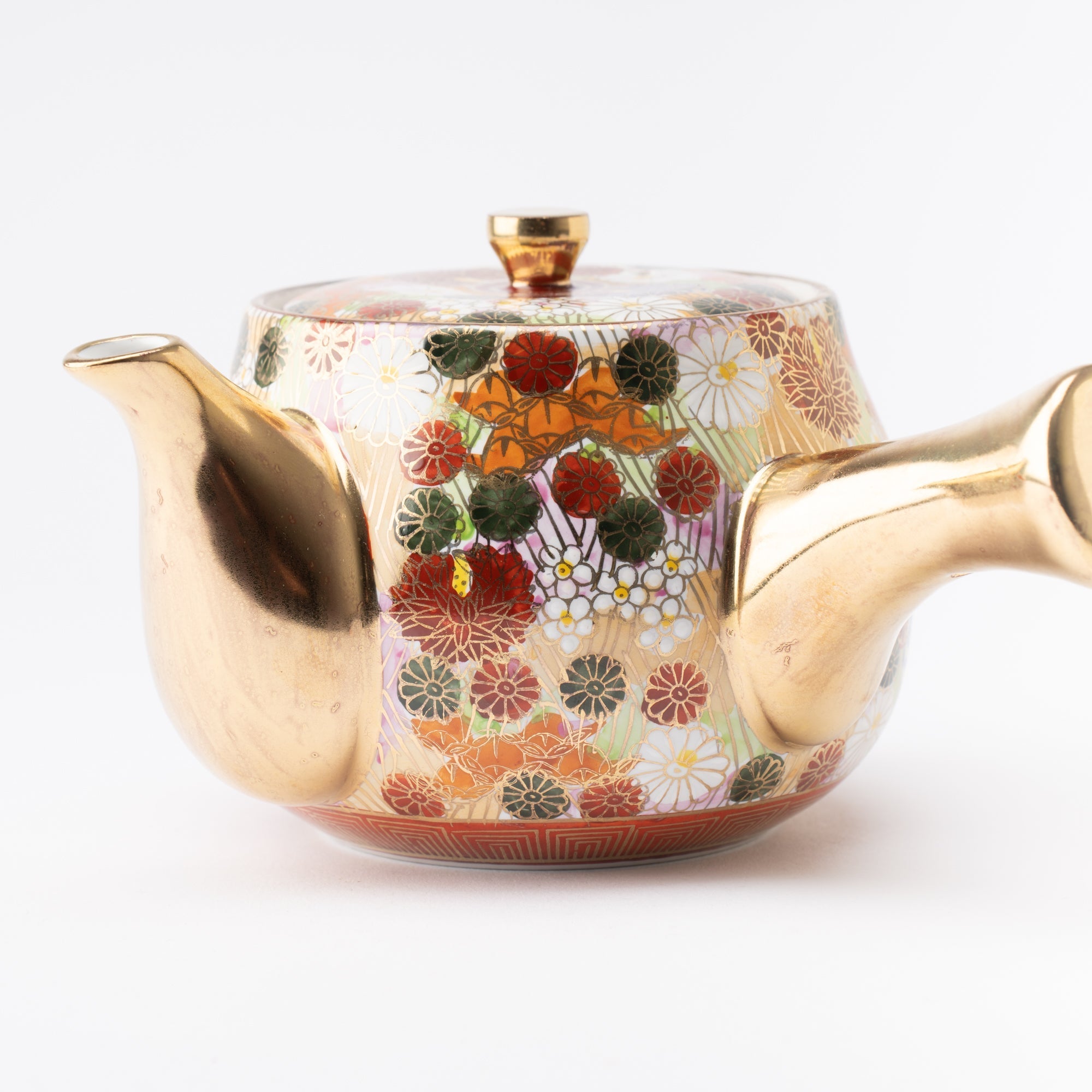
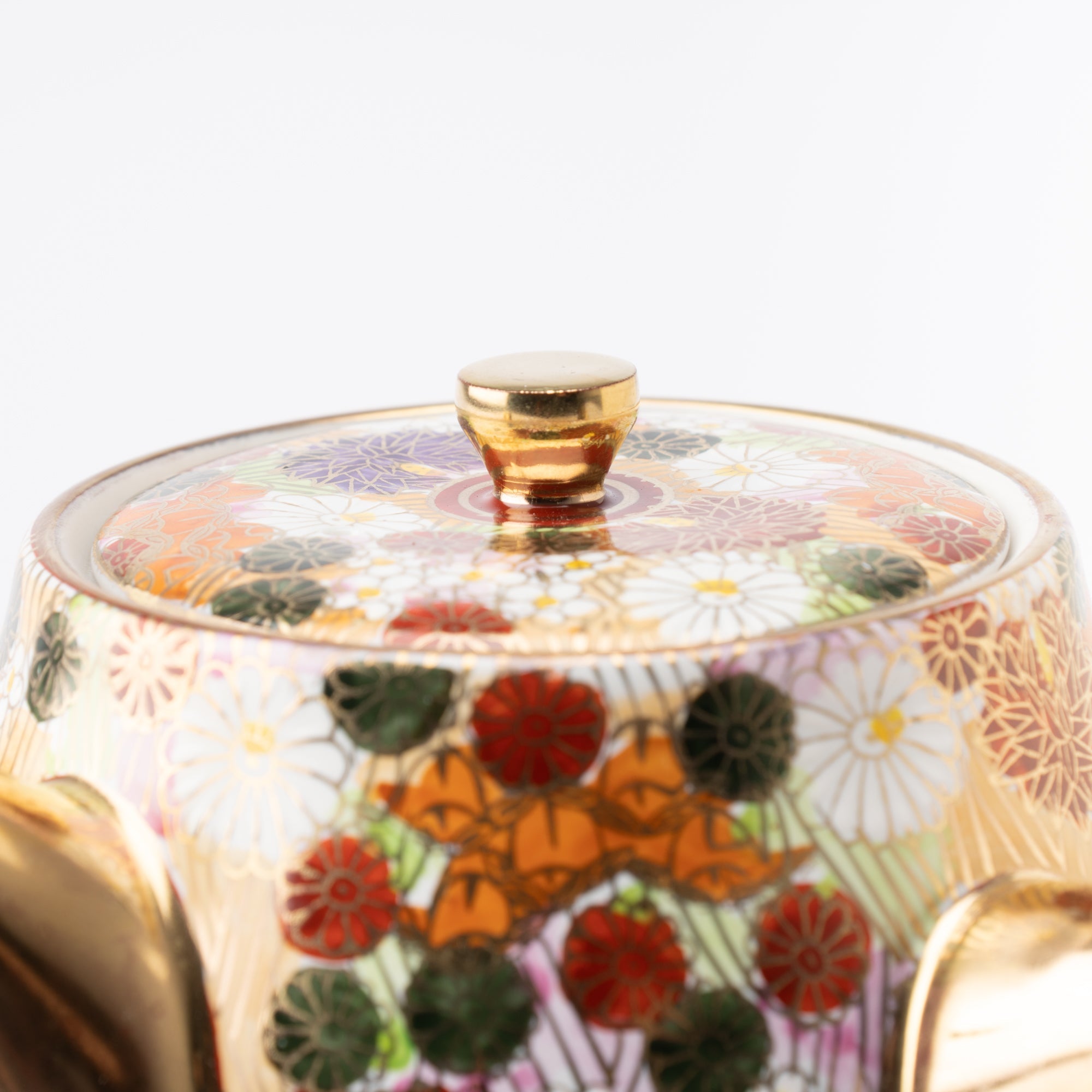
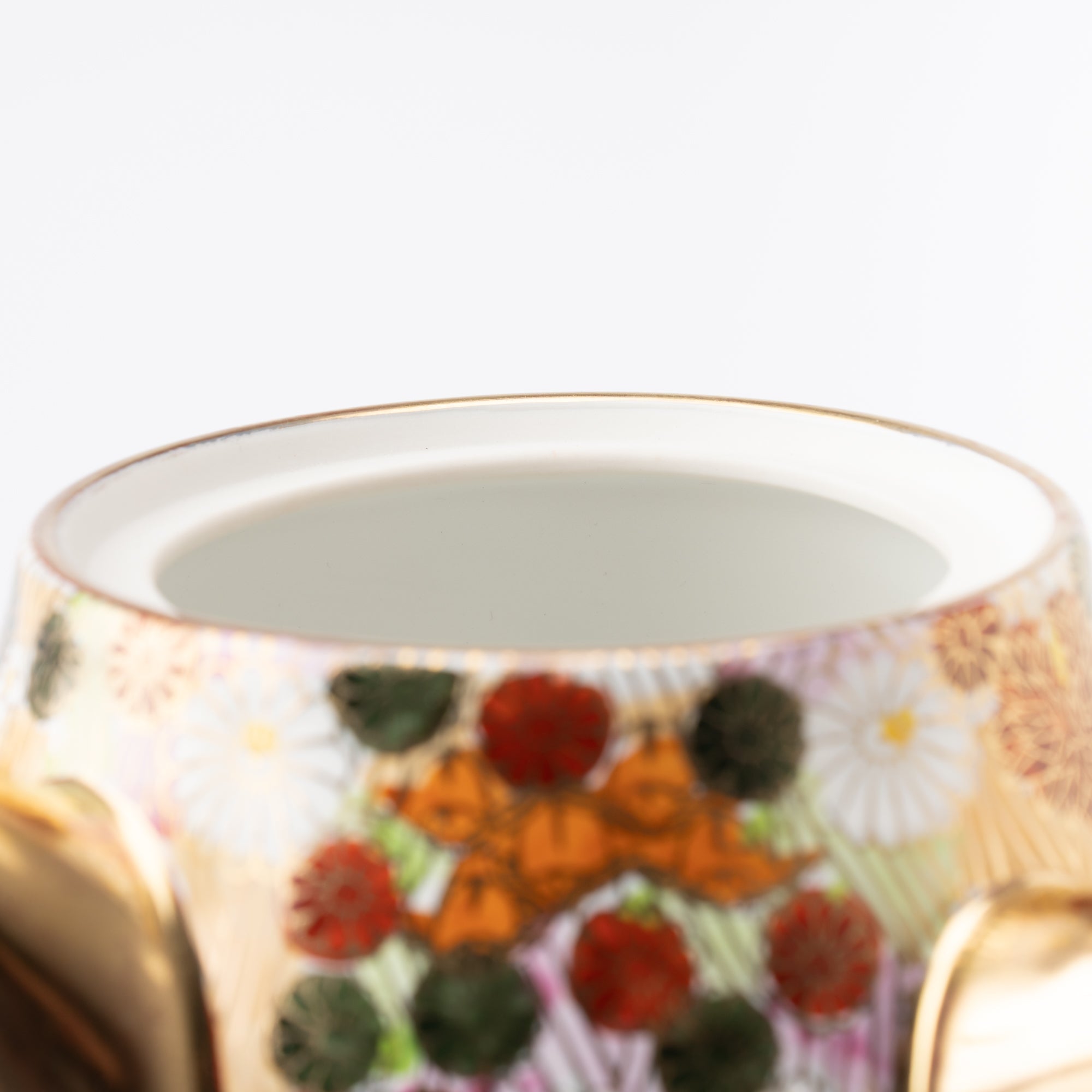
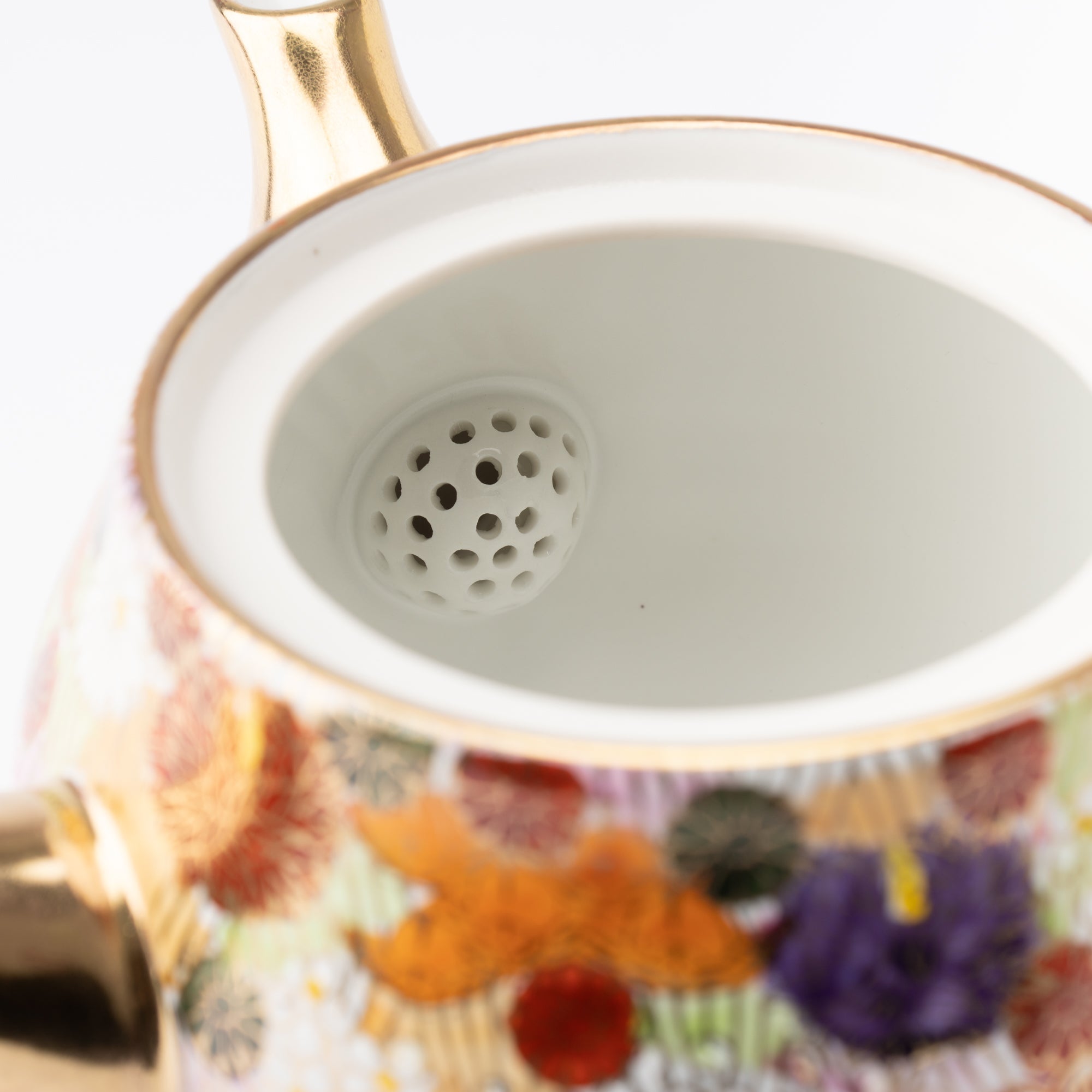
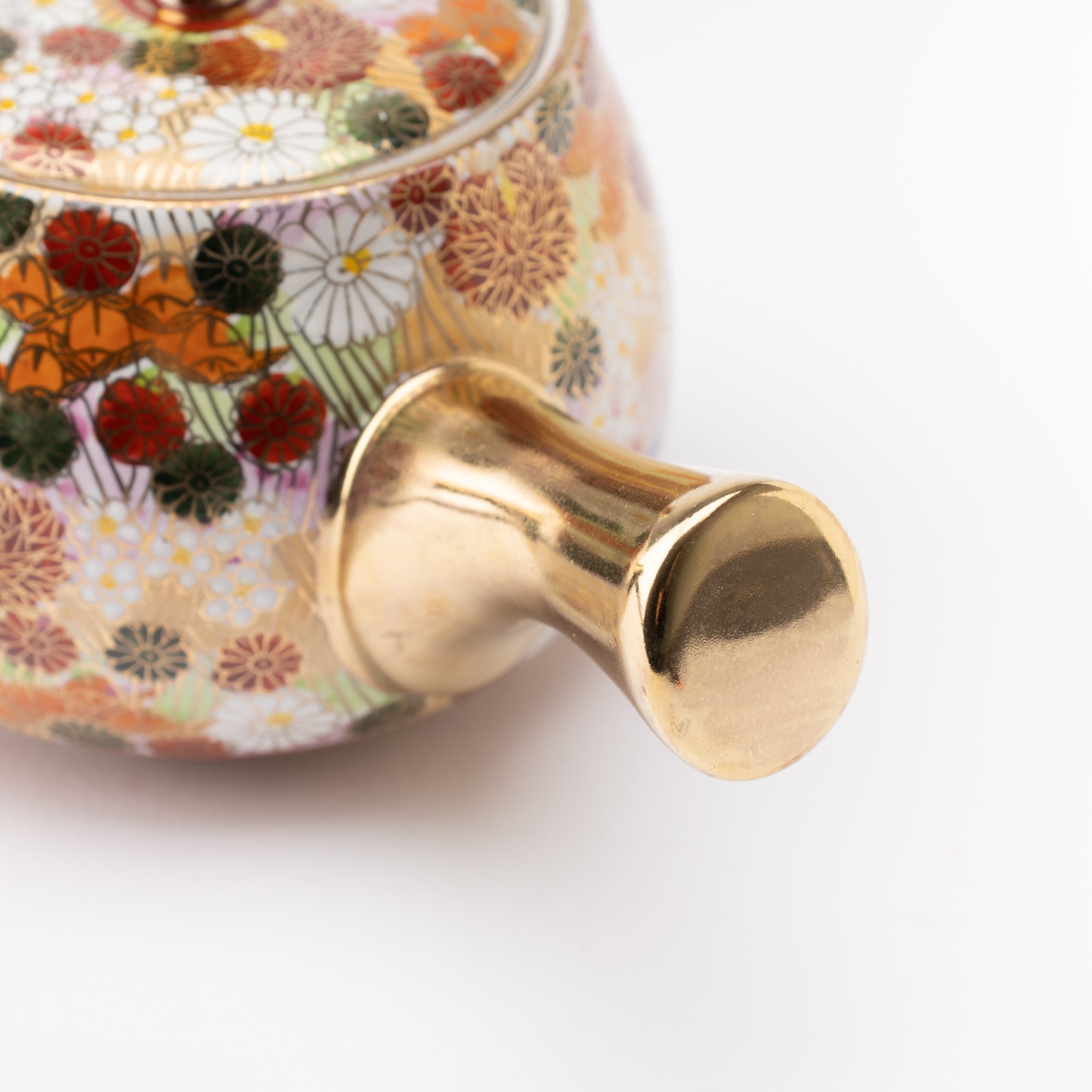
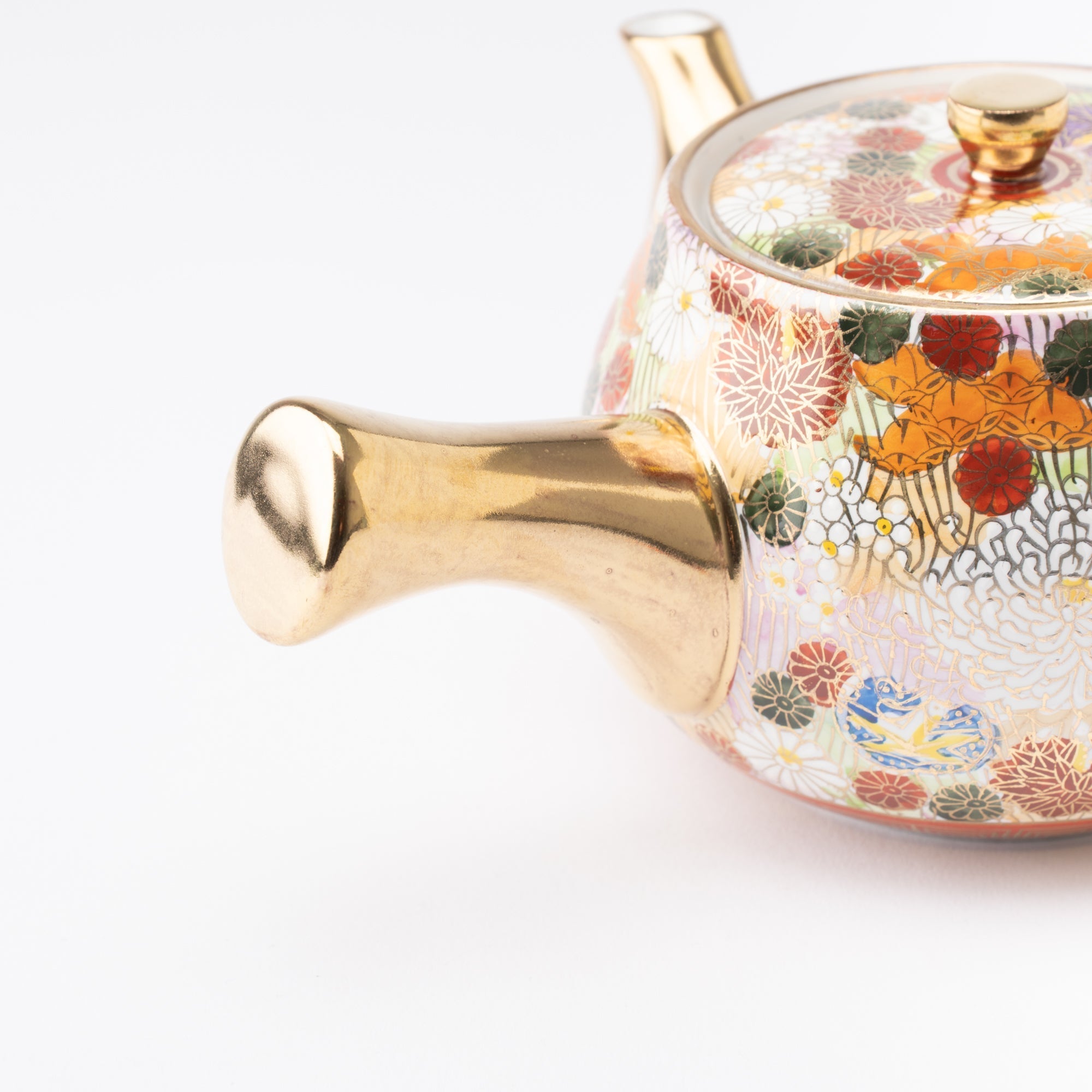
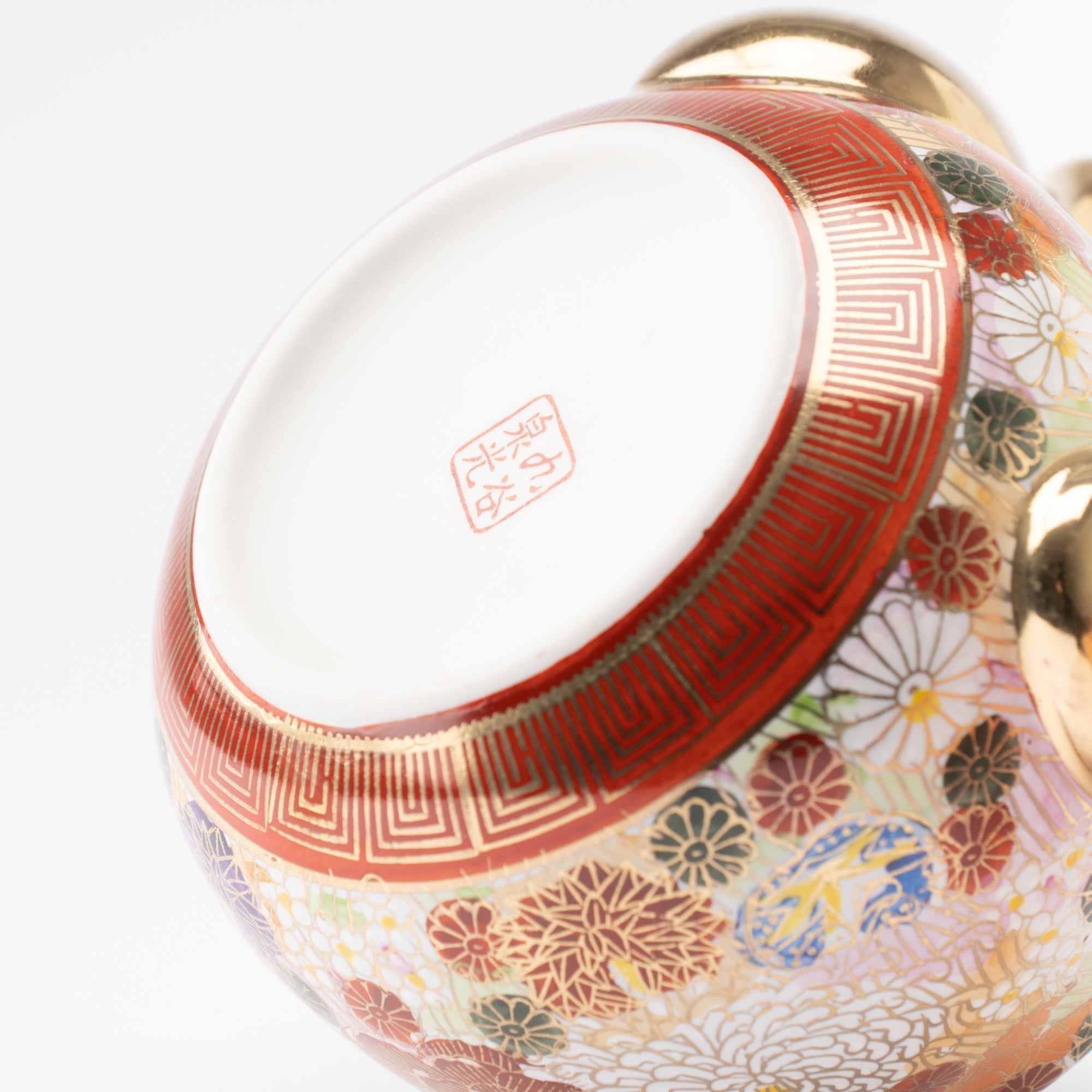
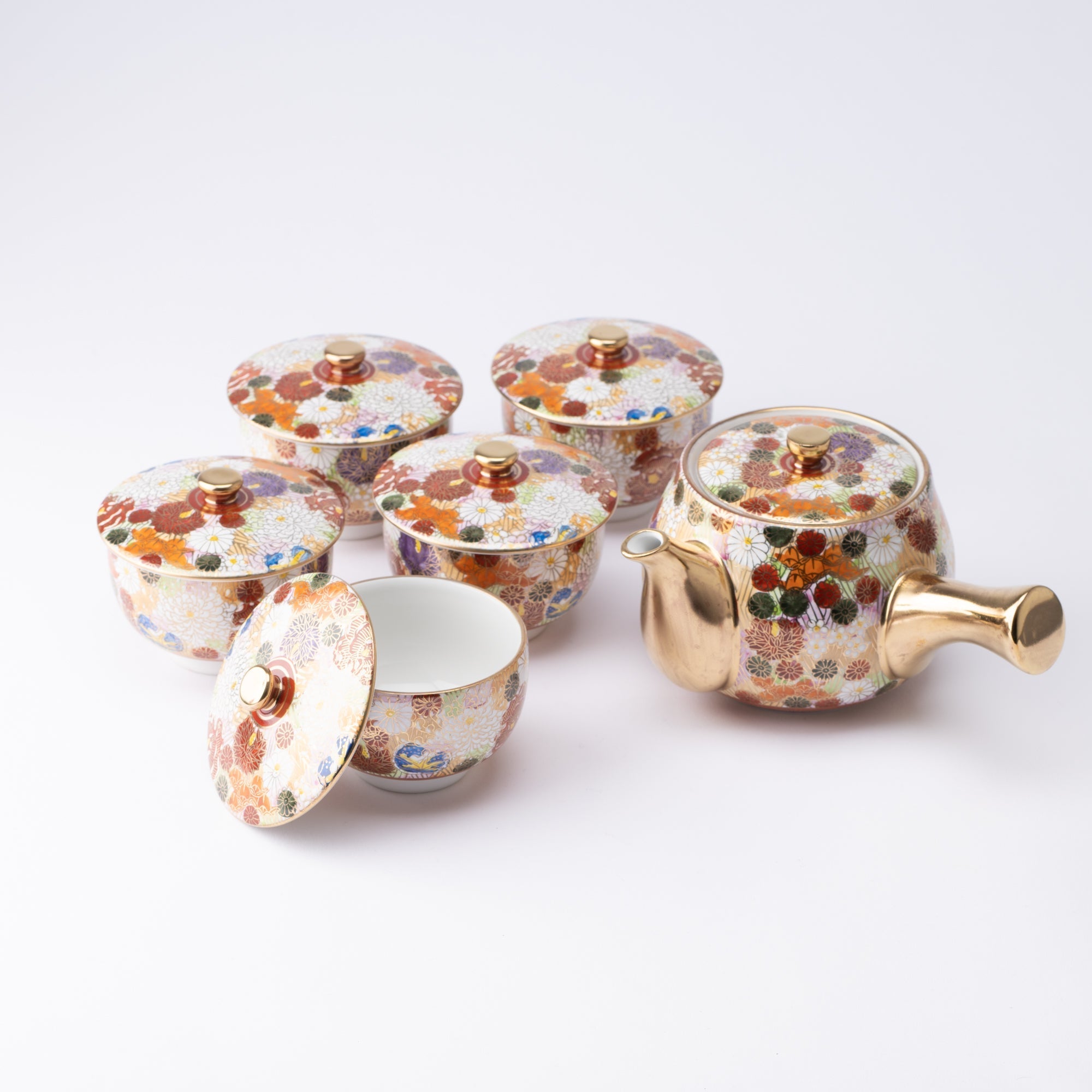
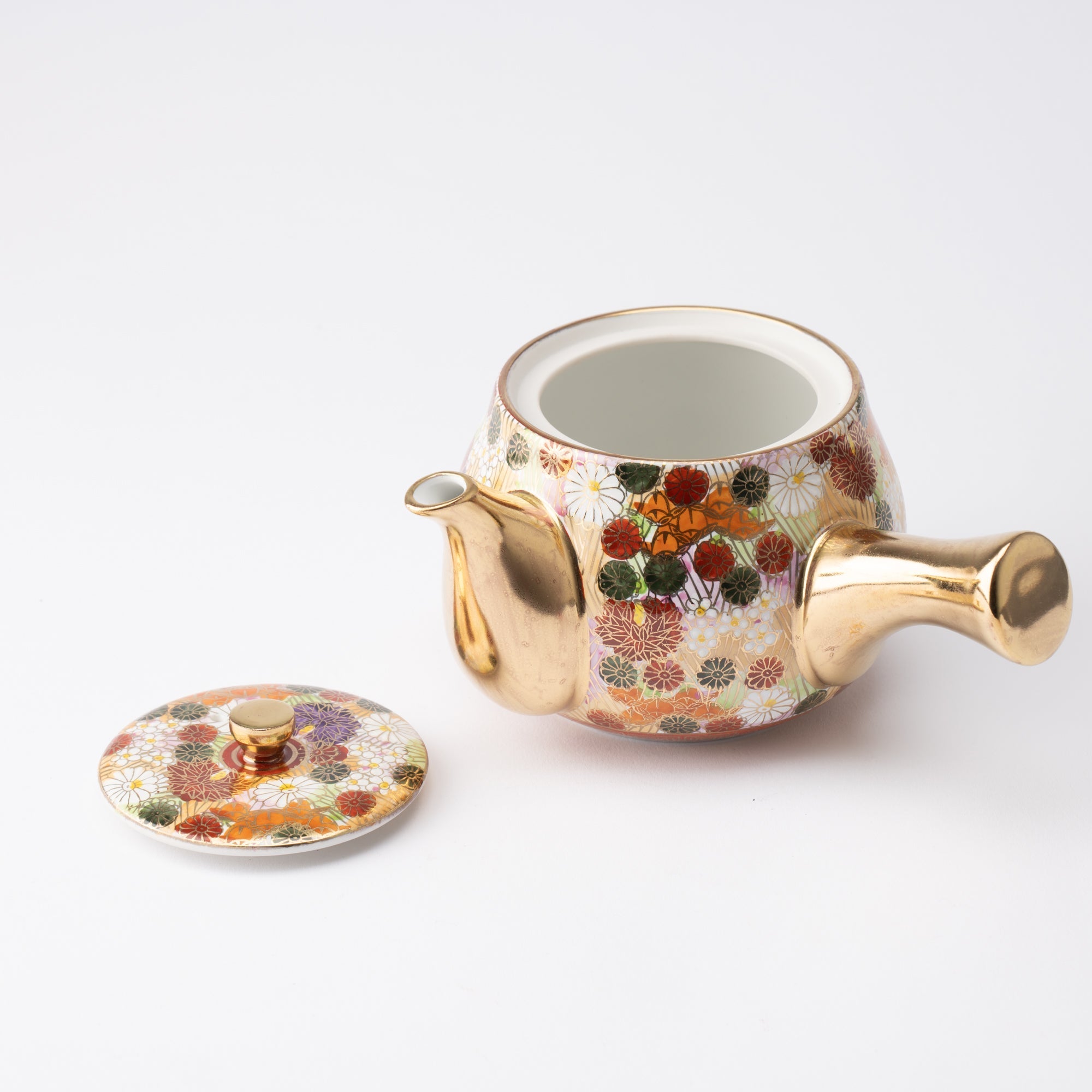
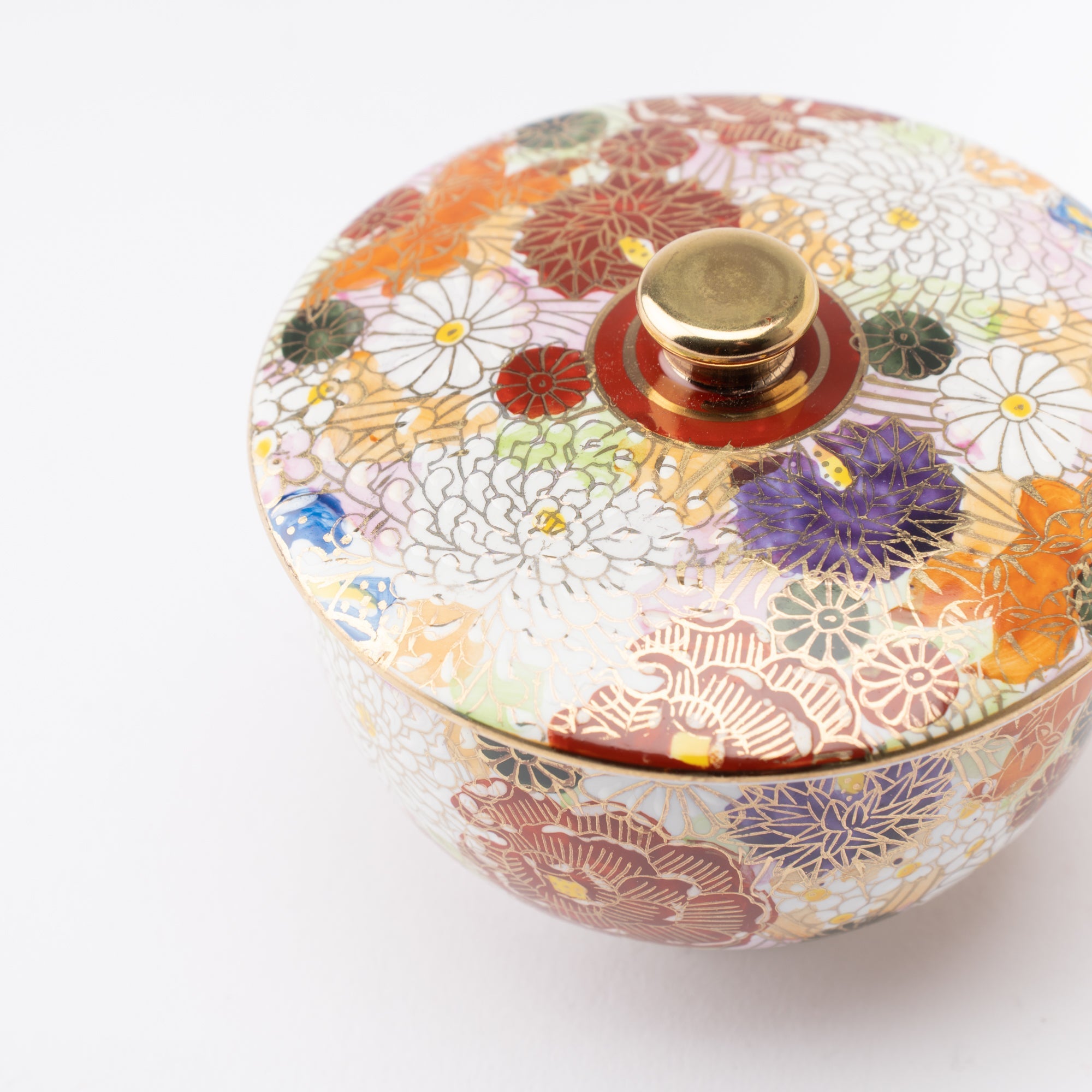
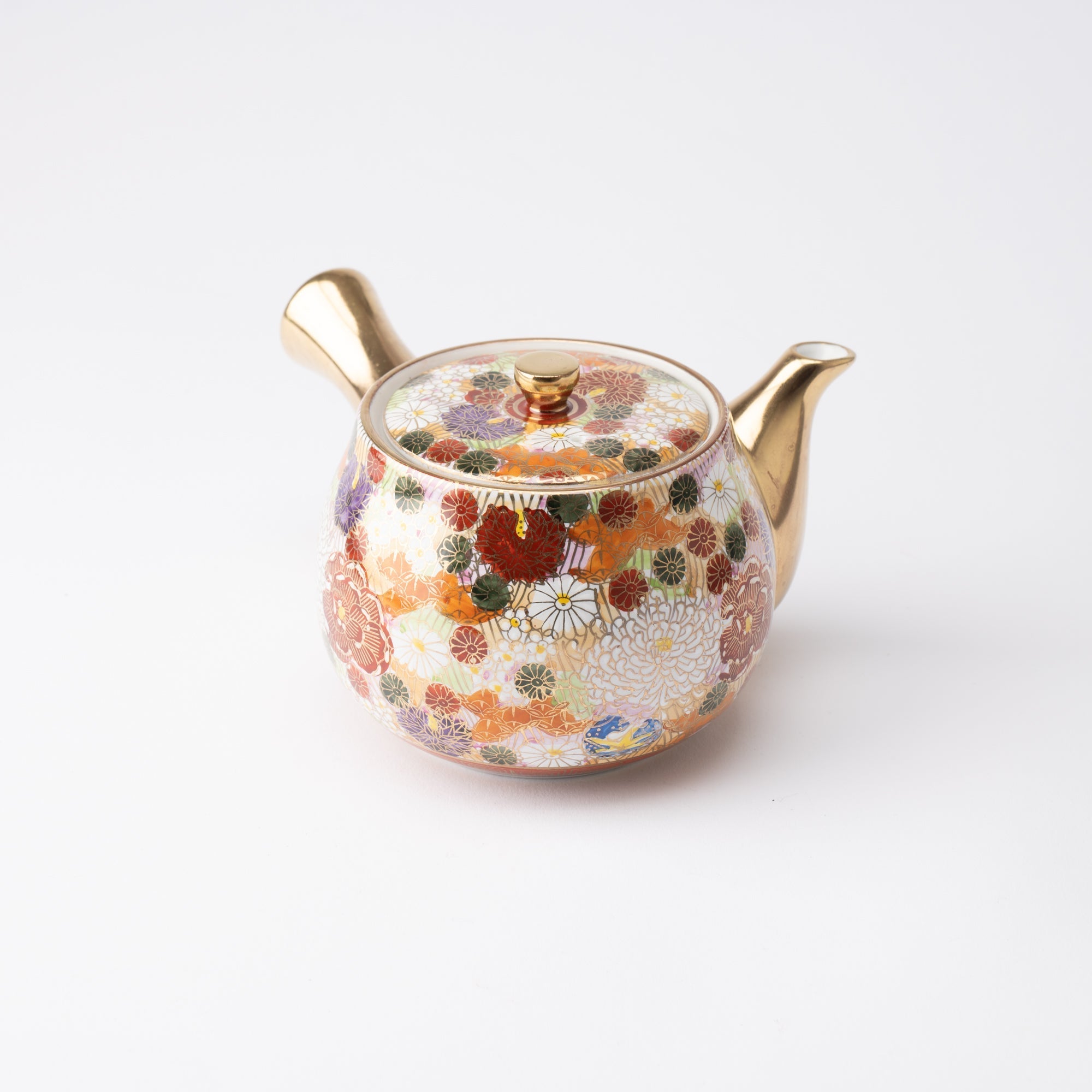
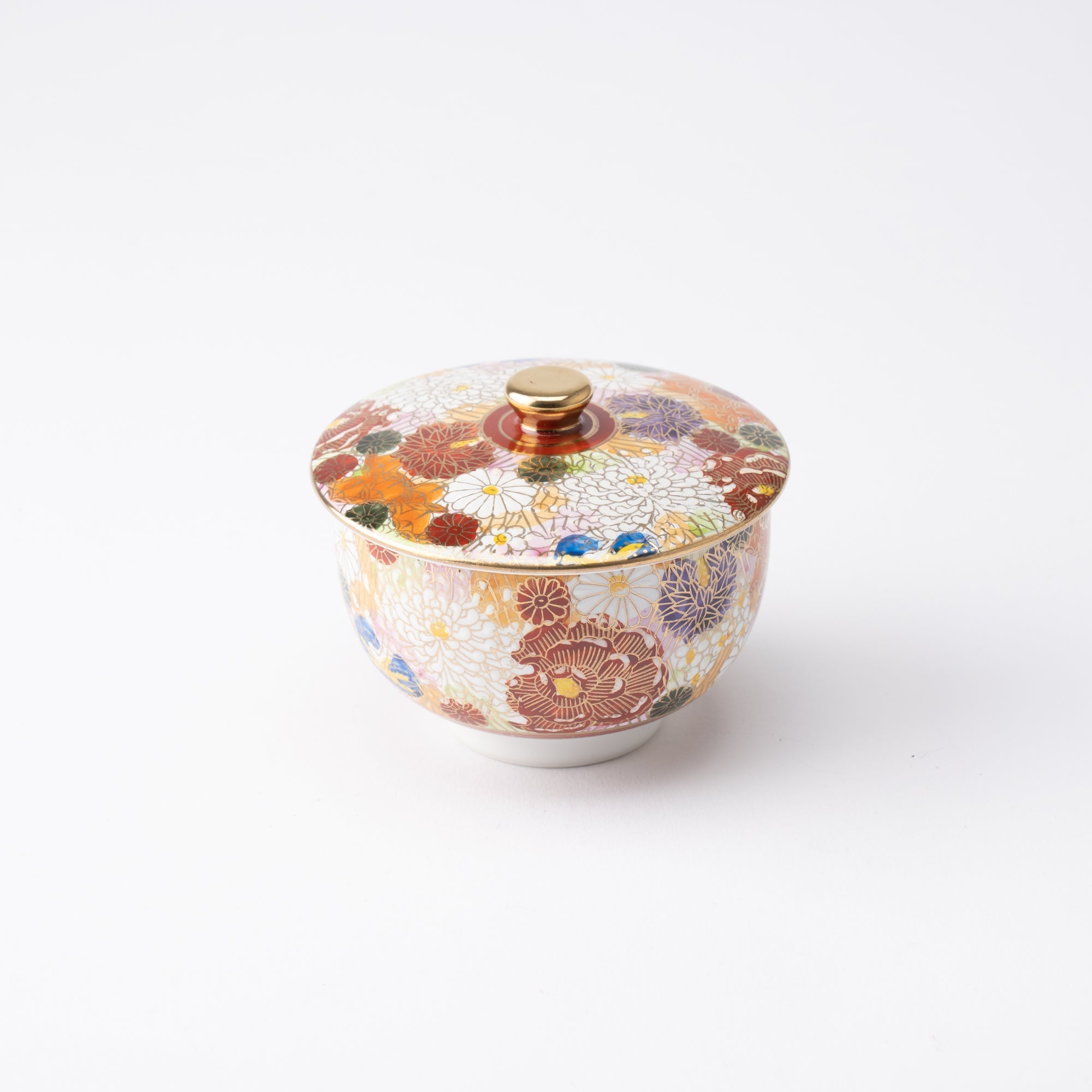
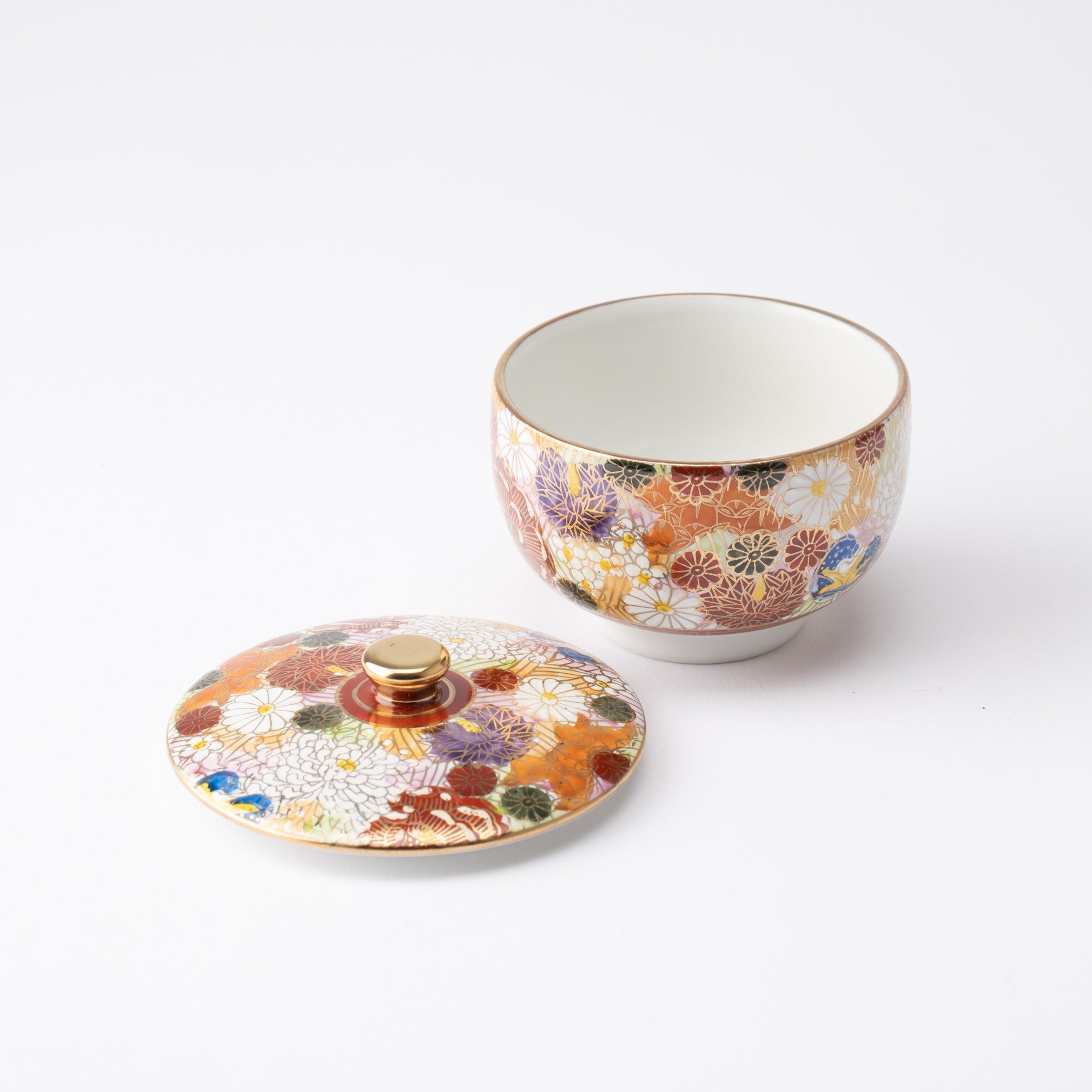
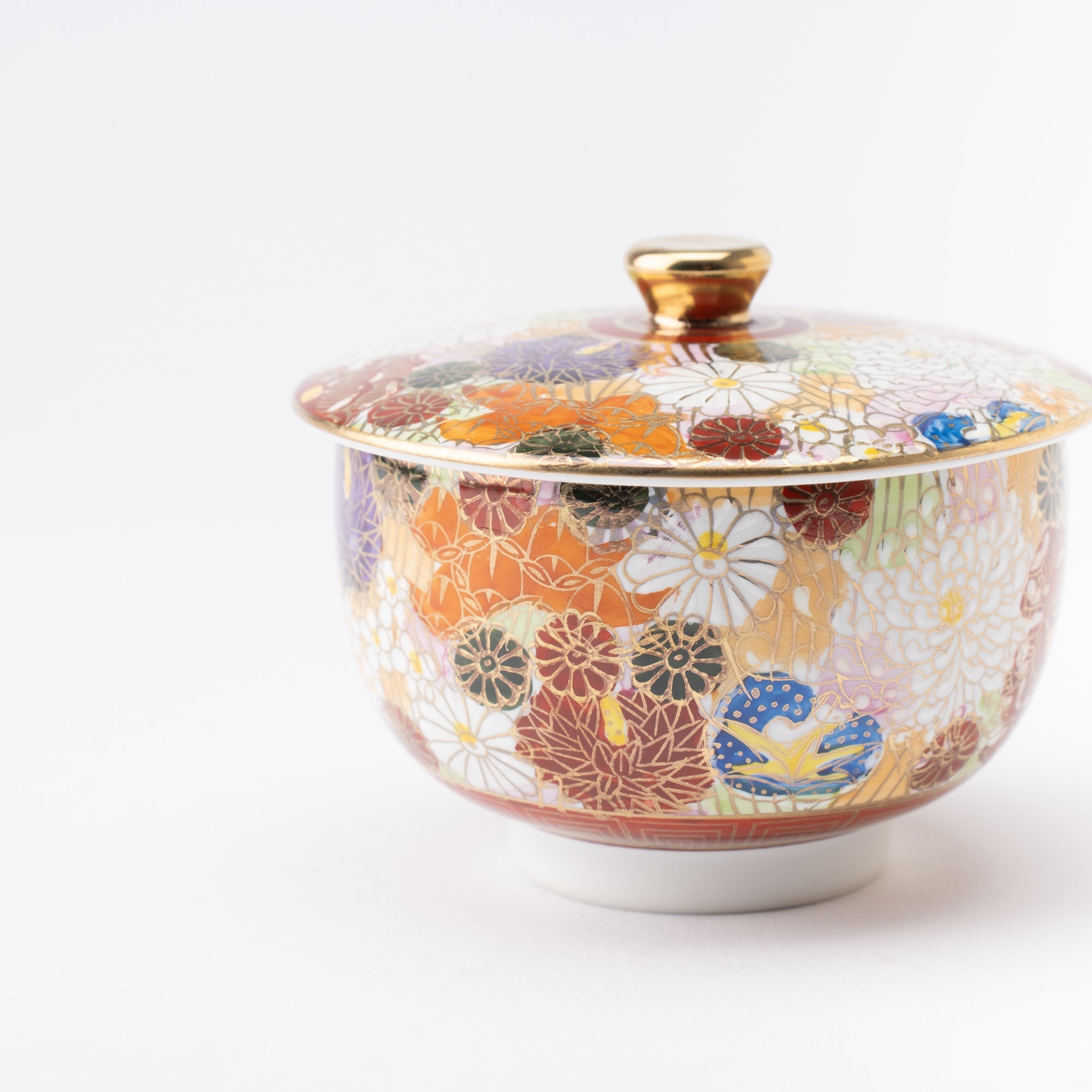
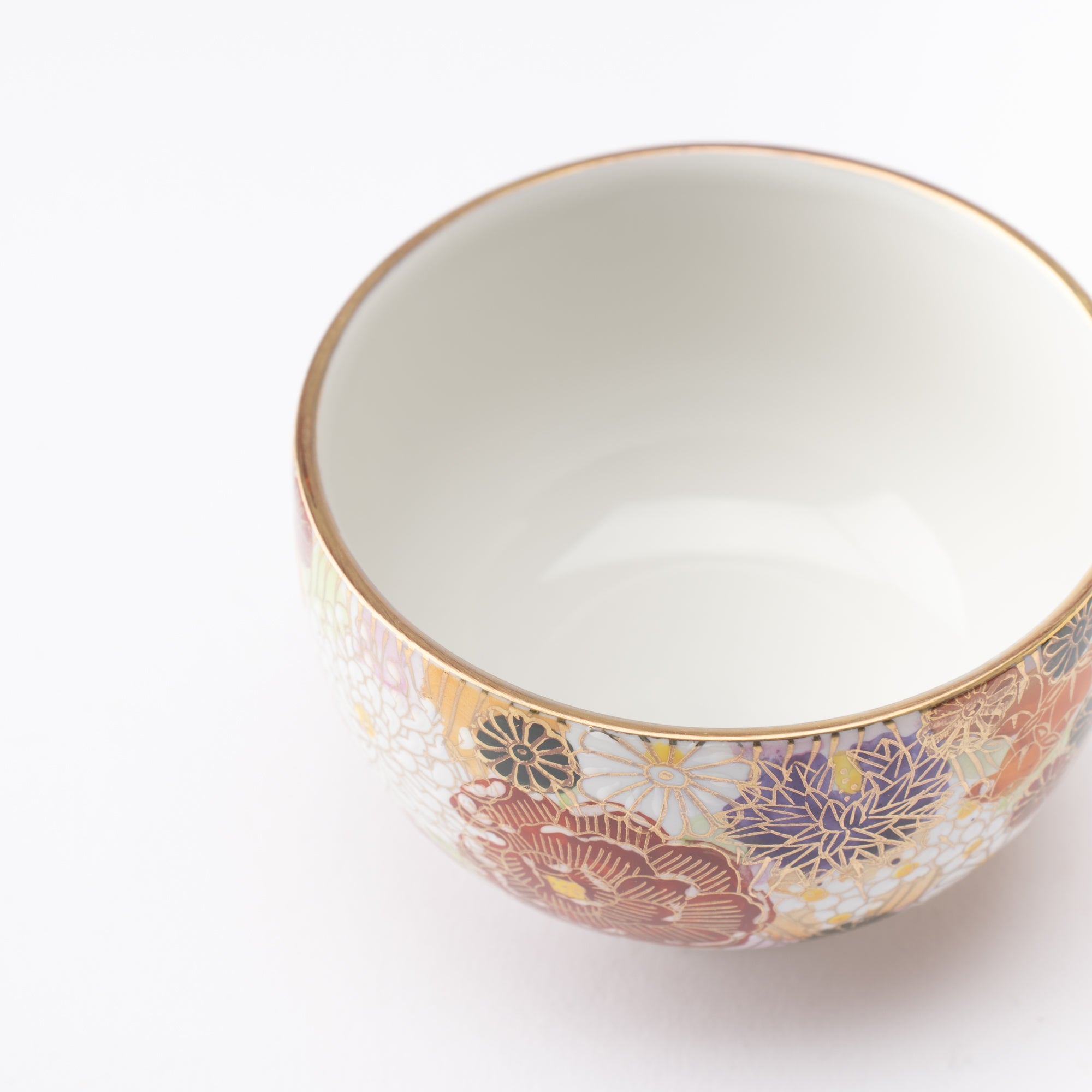
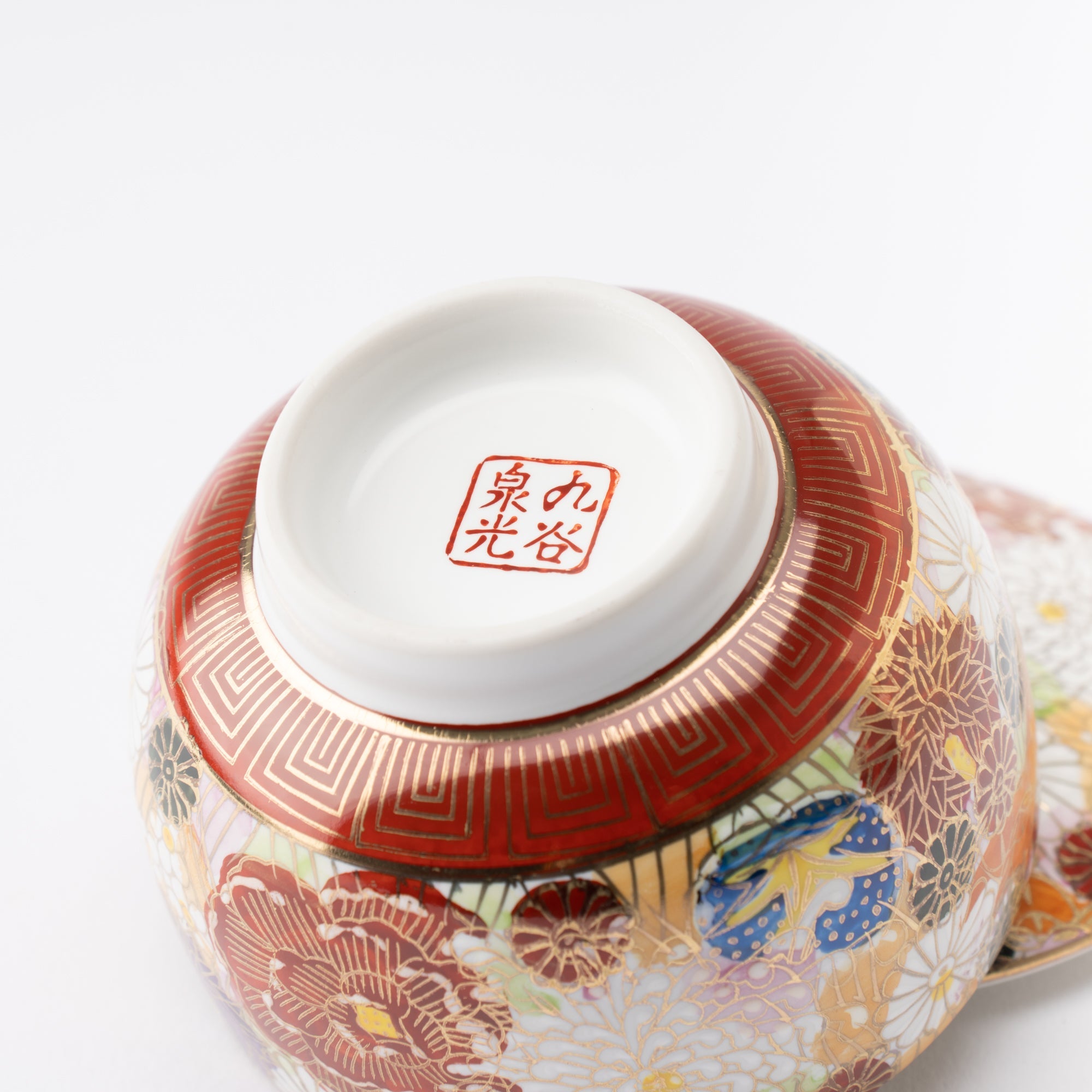
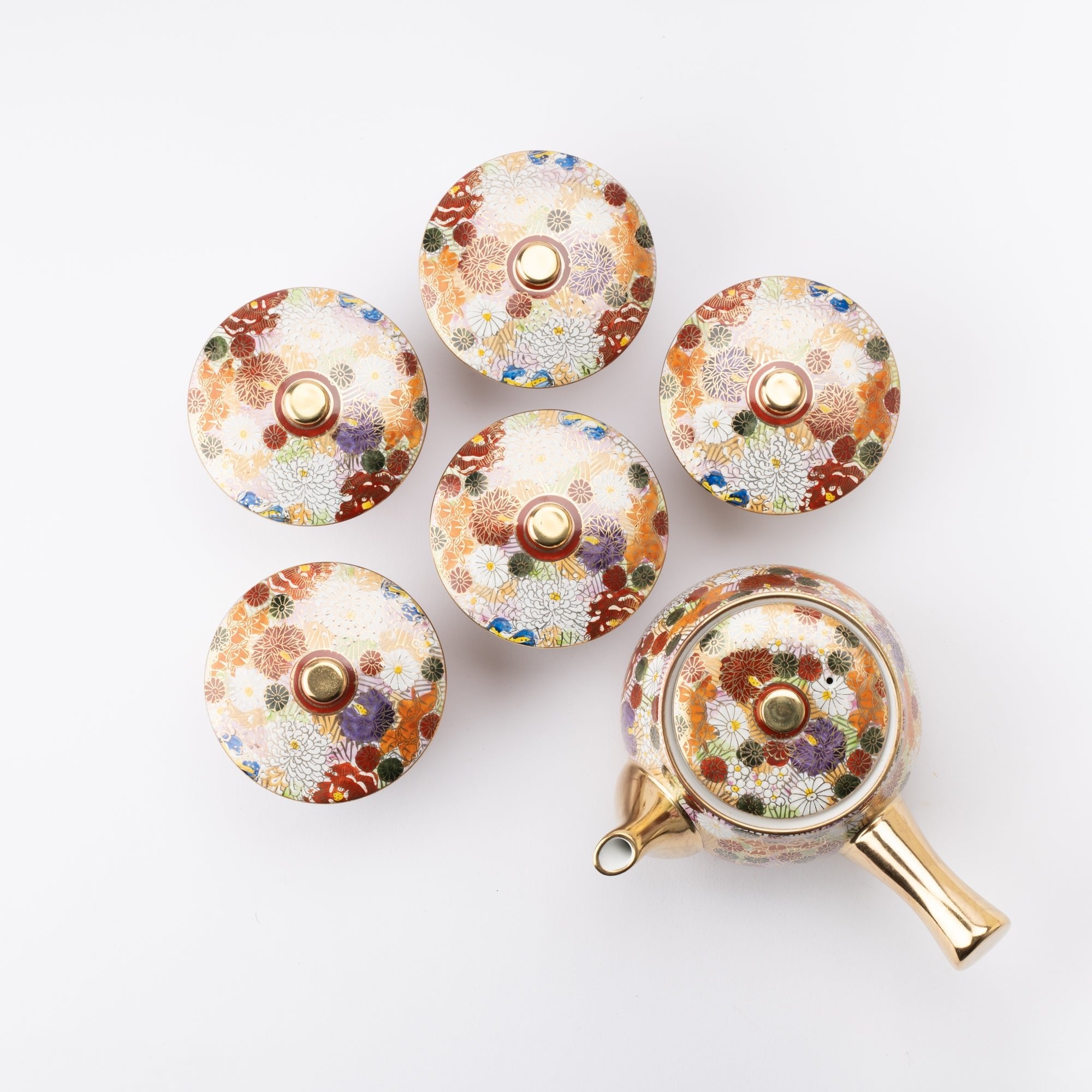
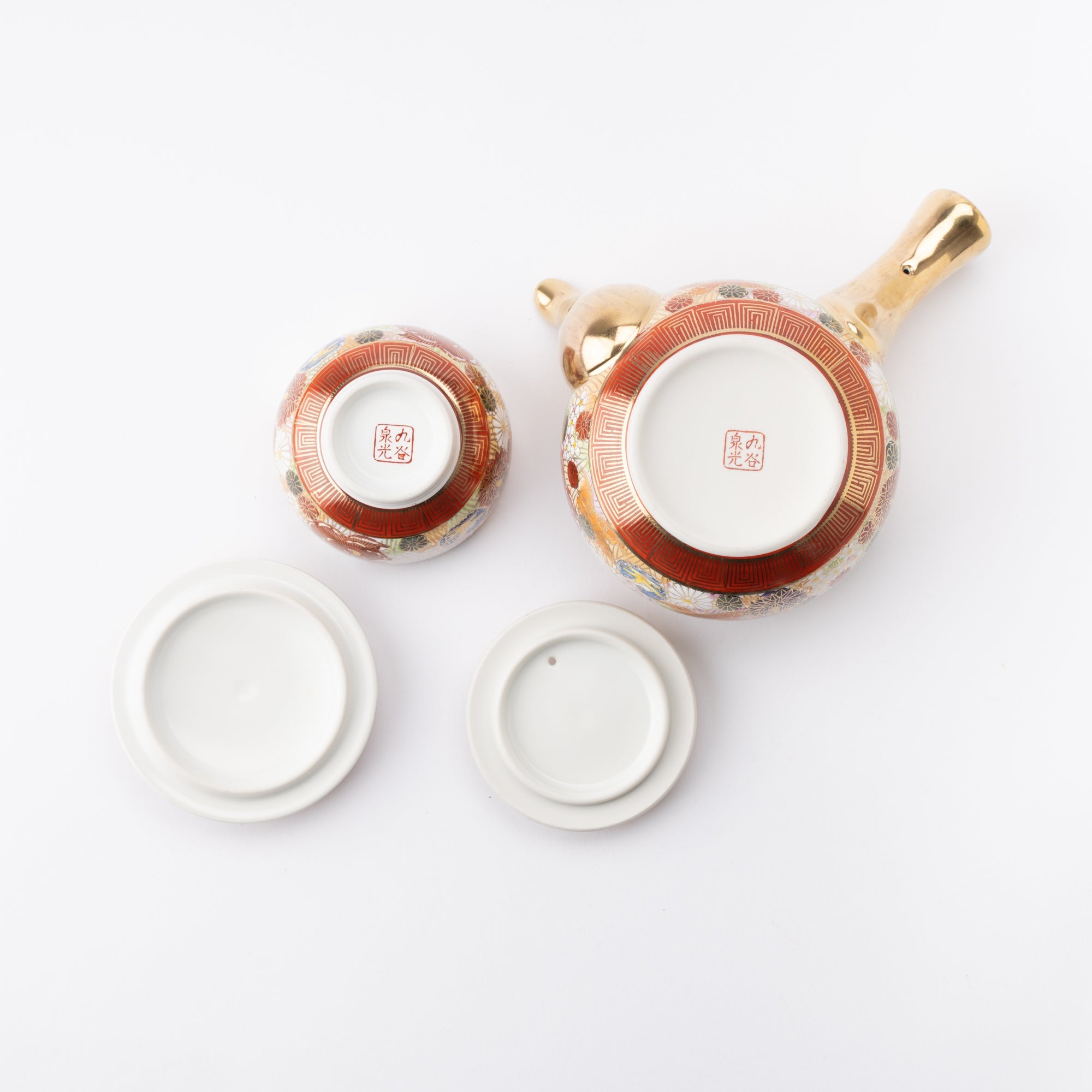
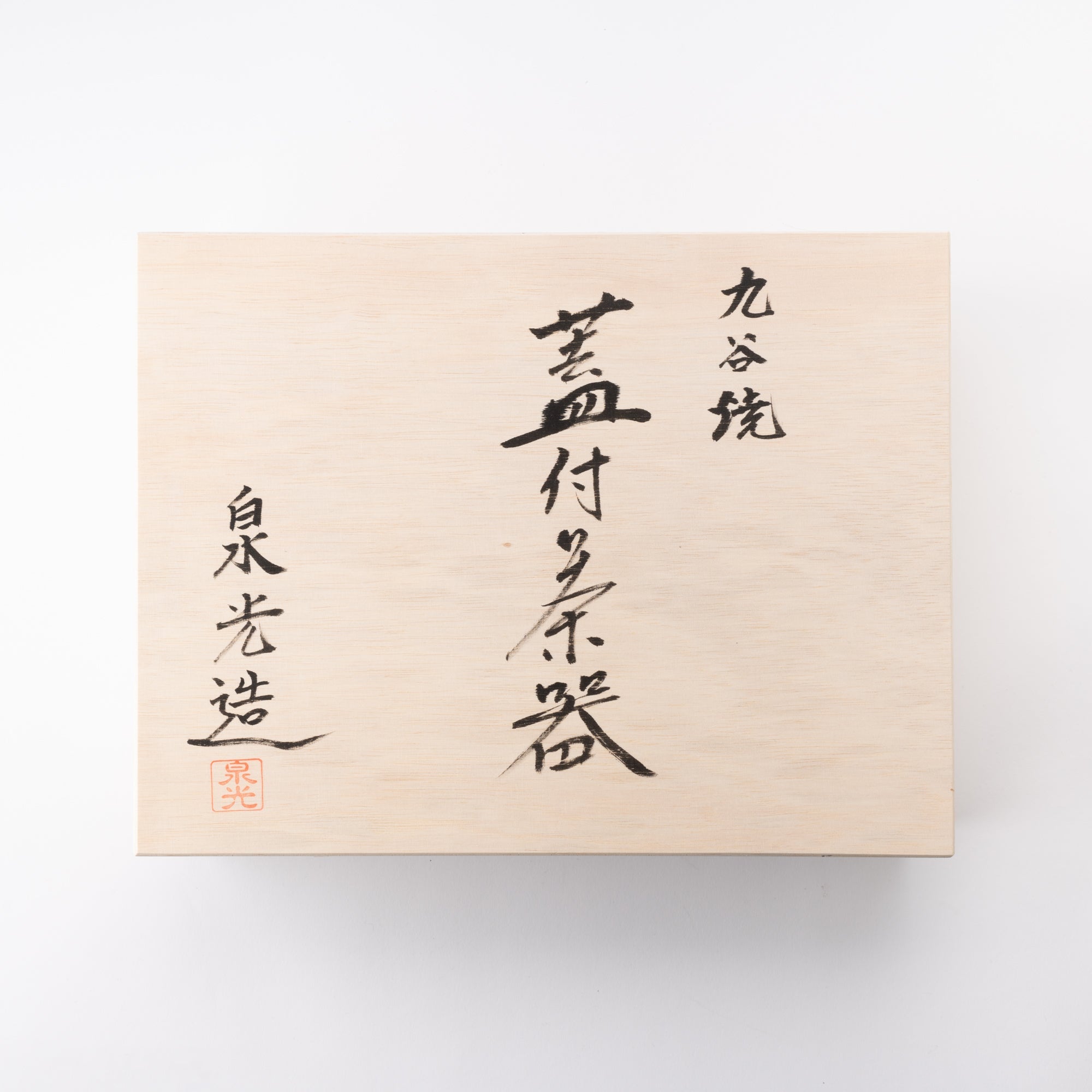
Golden Hanazume Japanese Tea Set
Estimated Shipping Widget will be displayed here!
This premium handmade ceramic Japanese teapot set features the hanazume style—literally meaning “filled with flowers”—one of the most iconic designs of Kutani ware, passed down since the Taisho period (1912–1926 CE), with each piece hand-painted in vibrant colors, finished with gold accents, and subtly varied to reflect the artisan’s skill, making every set beautifully unique.
Decorated with colorful flowers with gold trimmings, this set has a timeless elegance and sophistication created by hand drawn technique; there are no two alike. The teacup has a lid, making it very easy to use when welcoming important guests.
The tea strainer is called a sasame and is attached directly to the inside of the teapot. This allows the tea leaves to circulate easily inside the pot, making the tea more fragrant. This is especially suitable for drinking high quality Japanese tea.
This exquisite tea set brings timeless beauty to every tea moment. Perfect for sharing Japanese tea with family or guests on special occasions, it also makes a meaningful gift for anyone who appreciates traditional culture. With its enduring design and lasting quality, it’s a piece to enjoy for years to come.
DETAILS
| Quantity | 1 teapot, 5 teacups |
| Size | [Teacup] D 8.3 cm (3.3 in) x H 5.3 cm (2.1 in) |
| Material | Porcelain |
| Package Type | Wooden box |
| Microwave | No |
| Dishwasher | No |
Crafts
Kutani ware is a pottery produced in the Kaga region of Ishikawa Prefecture, with a history spanning over 350 years. It is characterized by the heavy brilliance of the five colors of navy blue, red, purple, green, and yellow that are applied to the bold and daring lines. Its long history has evolved through the tireless efforts and enthusiasm of people who have sought innovation while maintaining tradition.
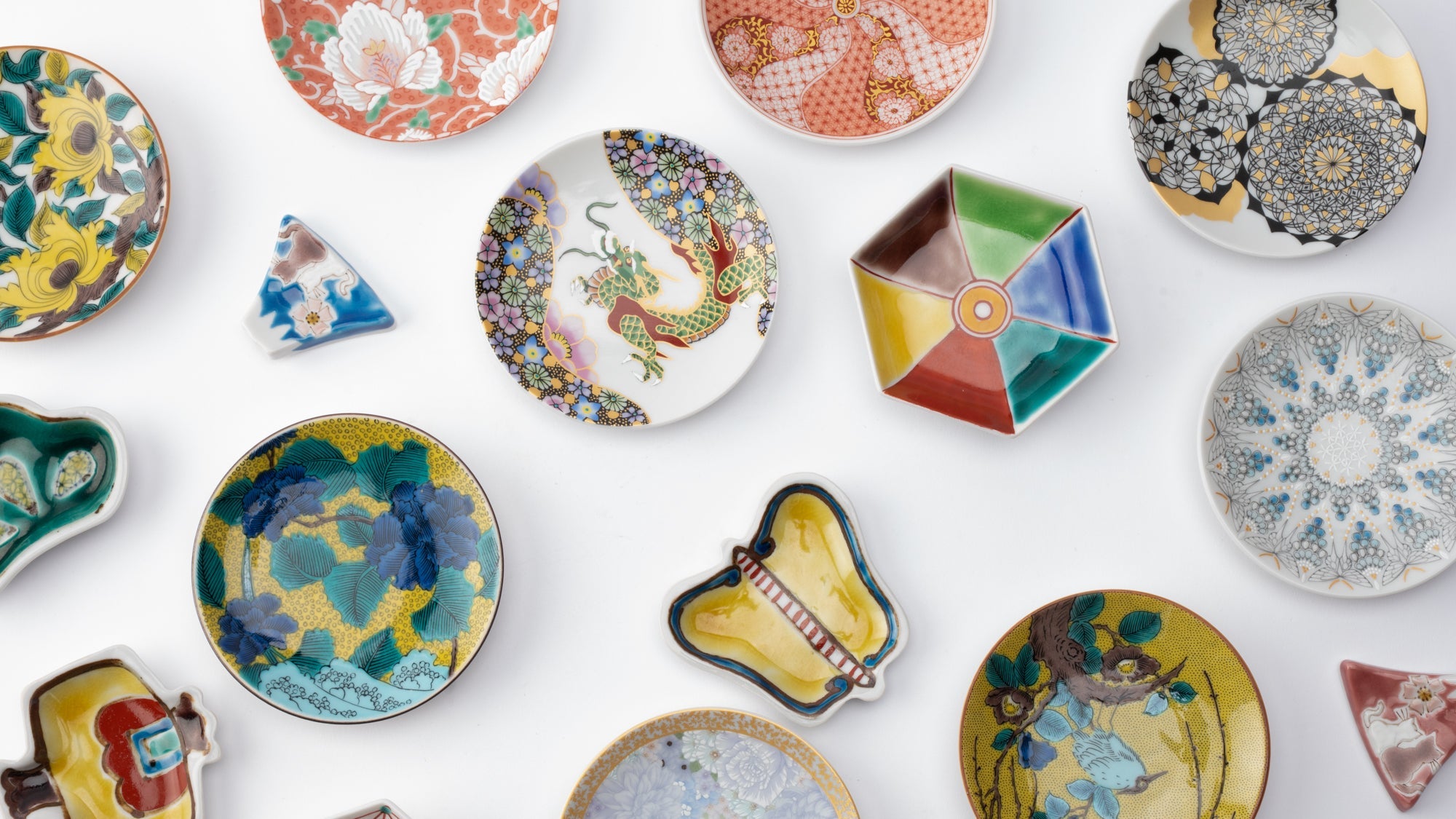
Choose options




























Estimated Shipping Widget will be displayed here!
Japanese Tea Sets
In Japan, ceramic teapots and tea cups come in a rich variety of forms, crafted in different regions using a range of materials and styles. This diversity reflects the depth of Japan’s tea culture and the distinctive character of local tea leaves cultivated across the country.
Our collection features carefully curated ceramic tea sets that pair teapots and cups in perfect harmony. Ideal for daily use or special gatherings, these thoughtfully designed sets, often presented in elegant boxes, make timeless gifts that convey warmth and appreciation.
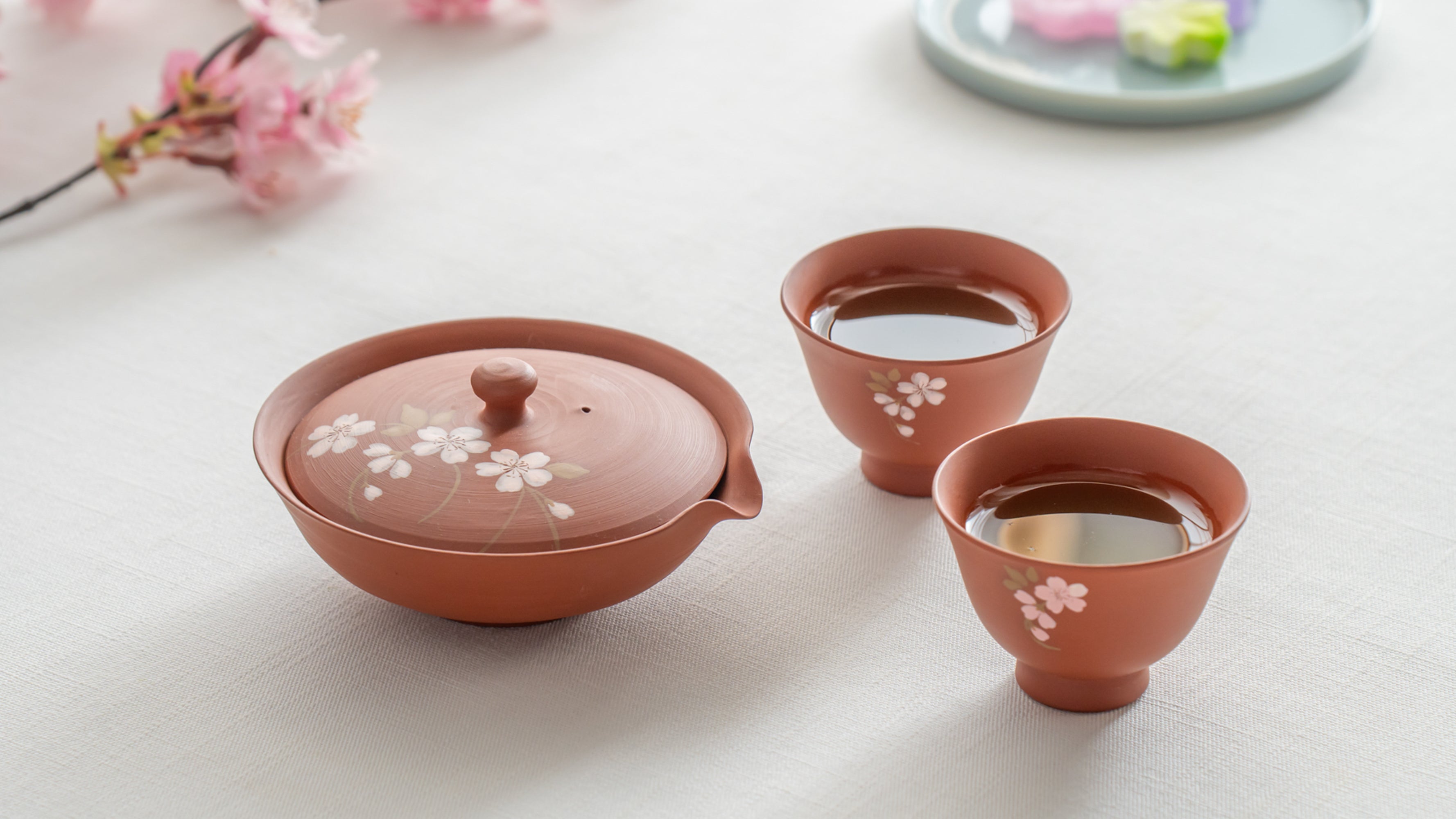
Hanazume
Hanazume is a classic Kutani ware technique in which flowers are intricately drawn across an entire surface. After the first firing, detailed floral designs are outlined with gold paint before the final firing. This decorative method, introduced by Shiro Mizuta in Kanazawa City during the Taisho period (1912 CE–1926 CE), beautifully combines vibrant flowers with elegant gold to create stunning pieces.
